Another Bedtime Story (2017)
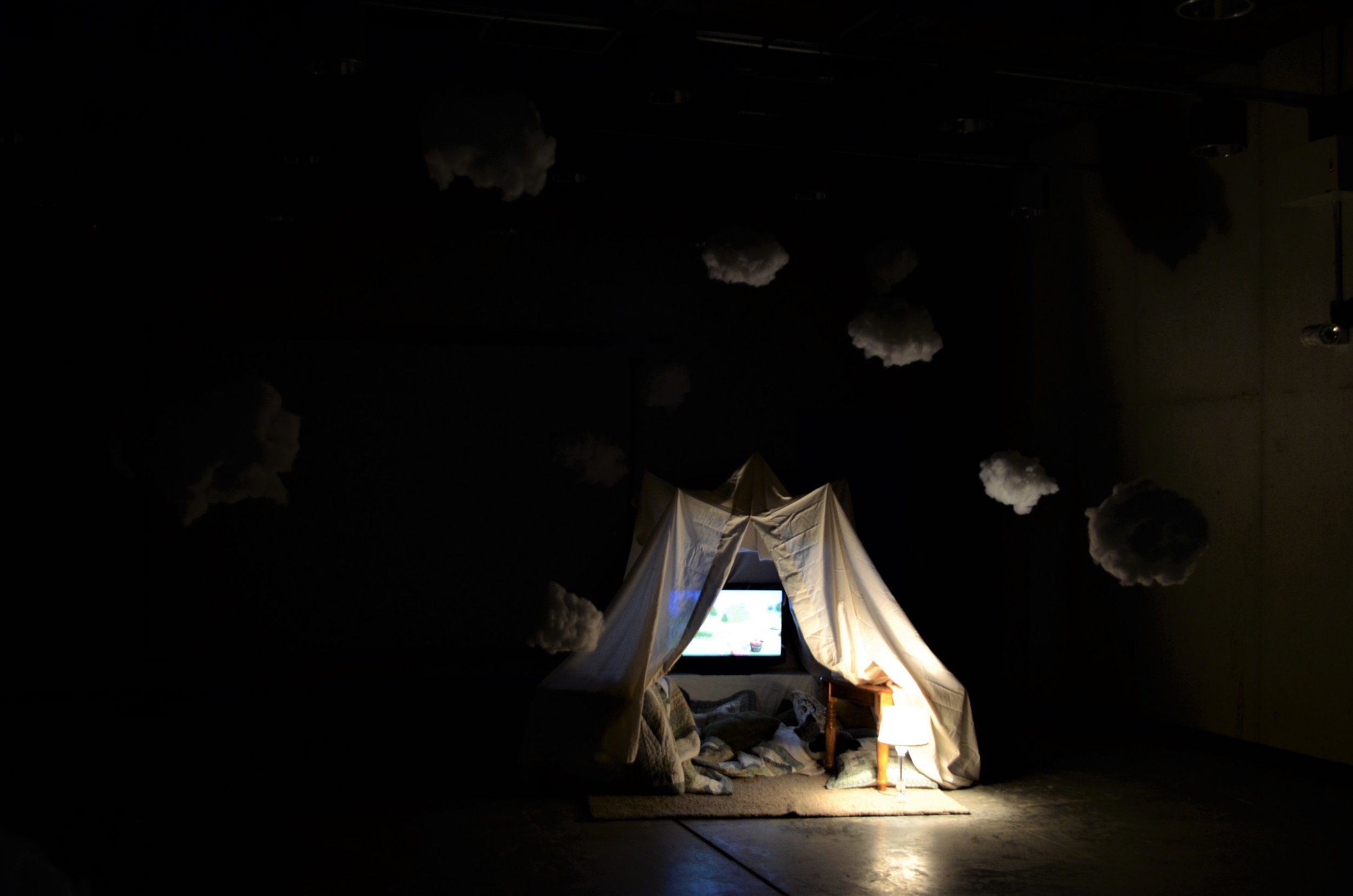

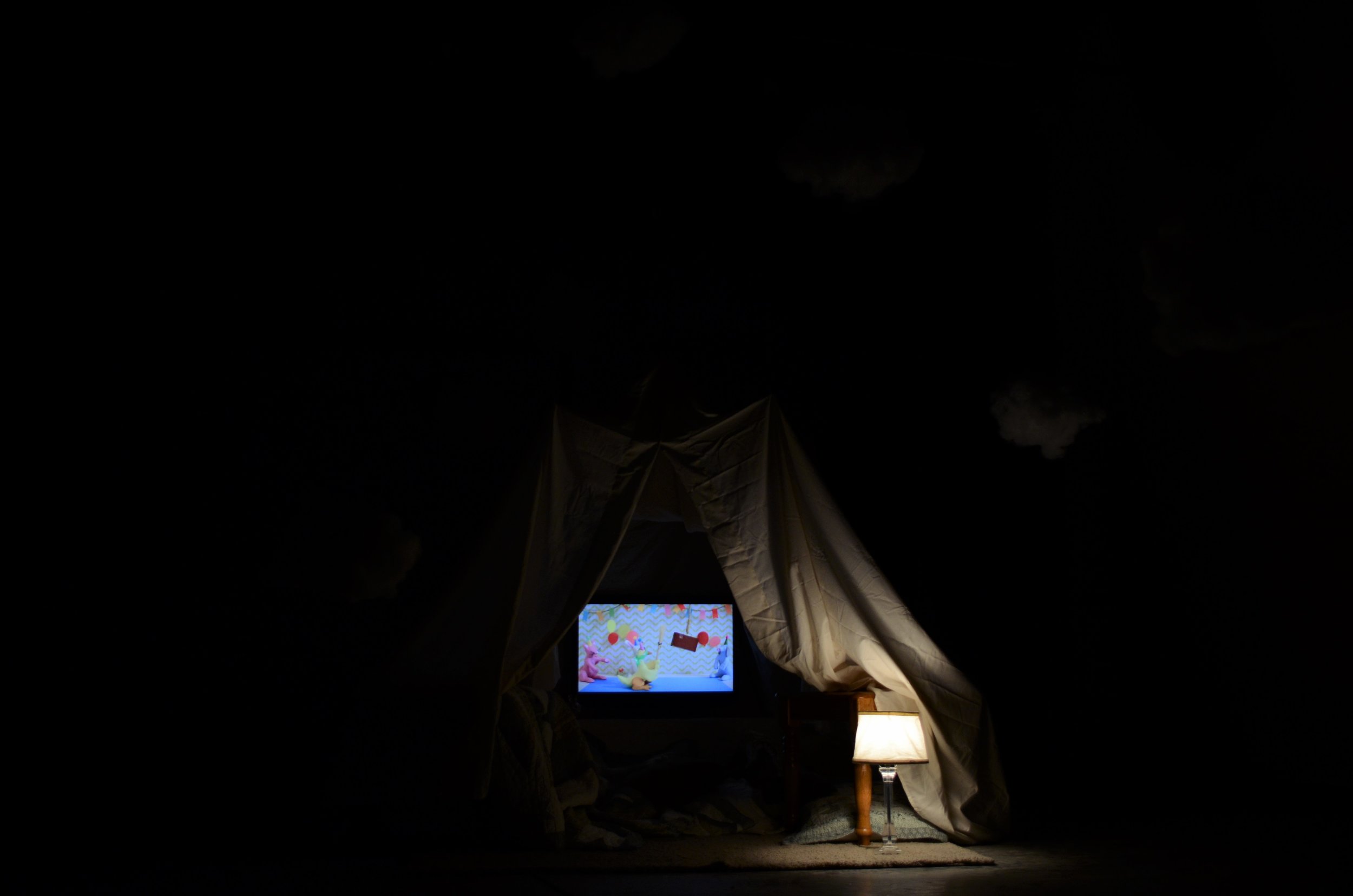
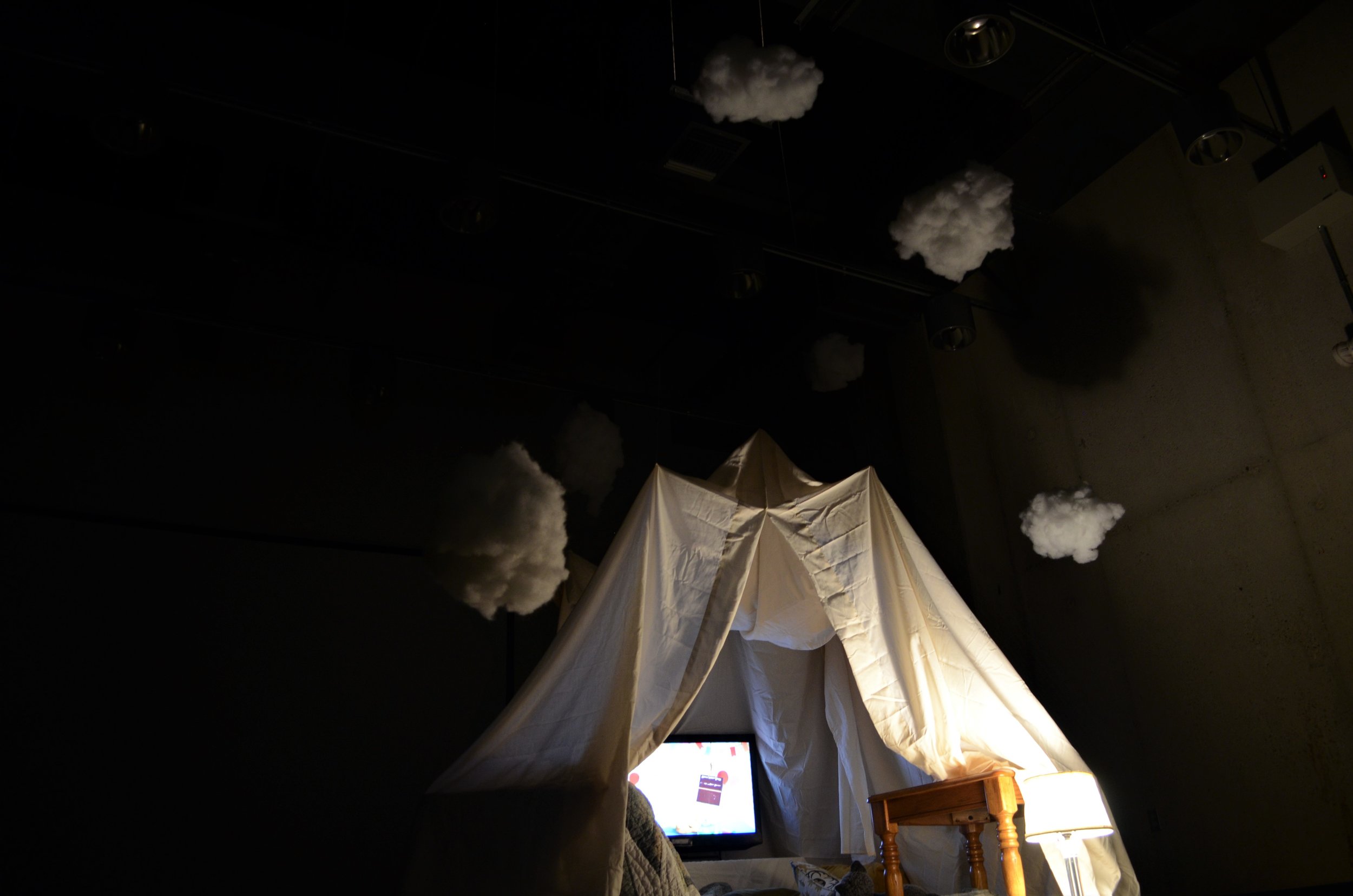
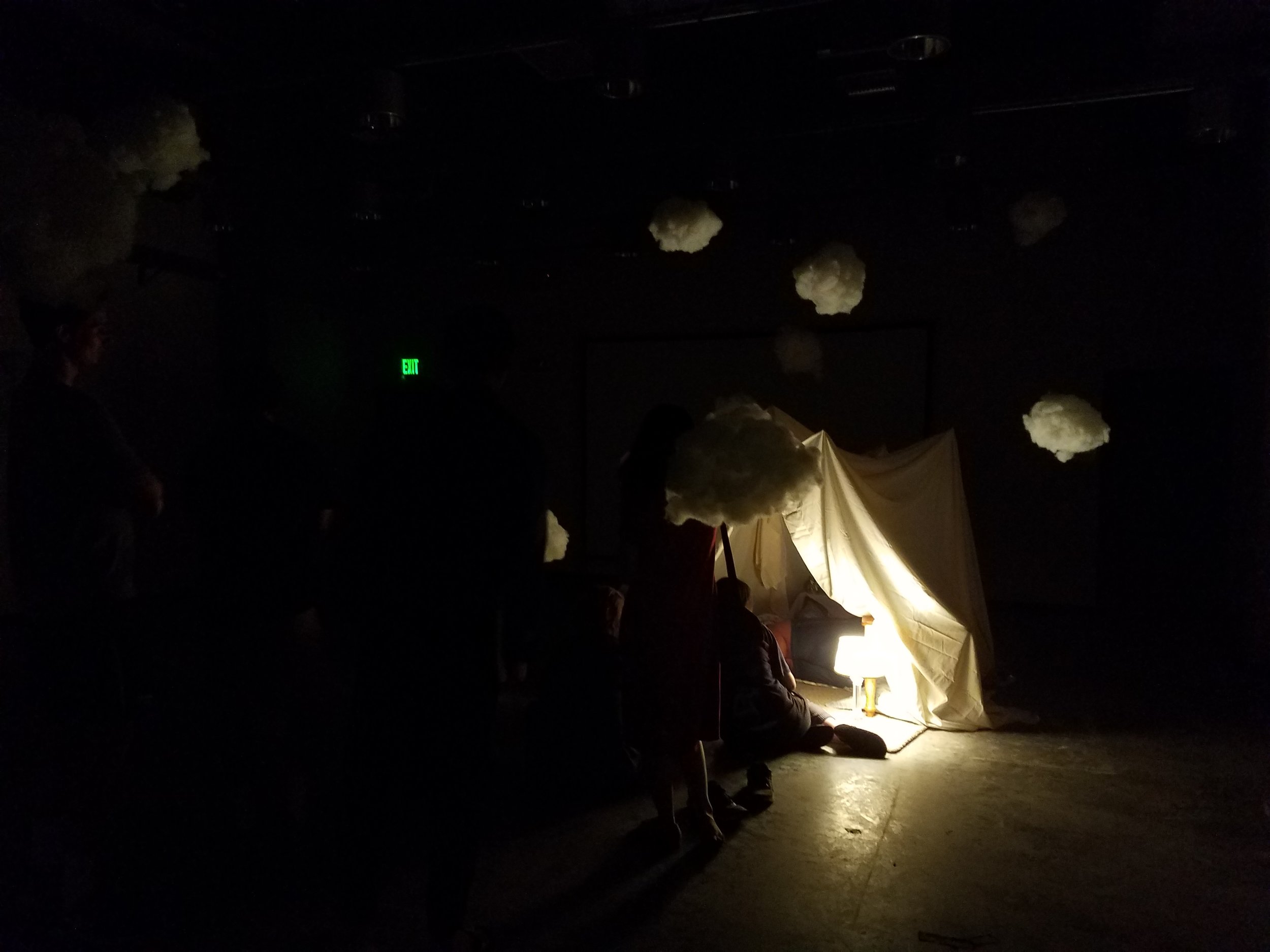
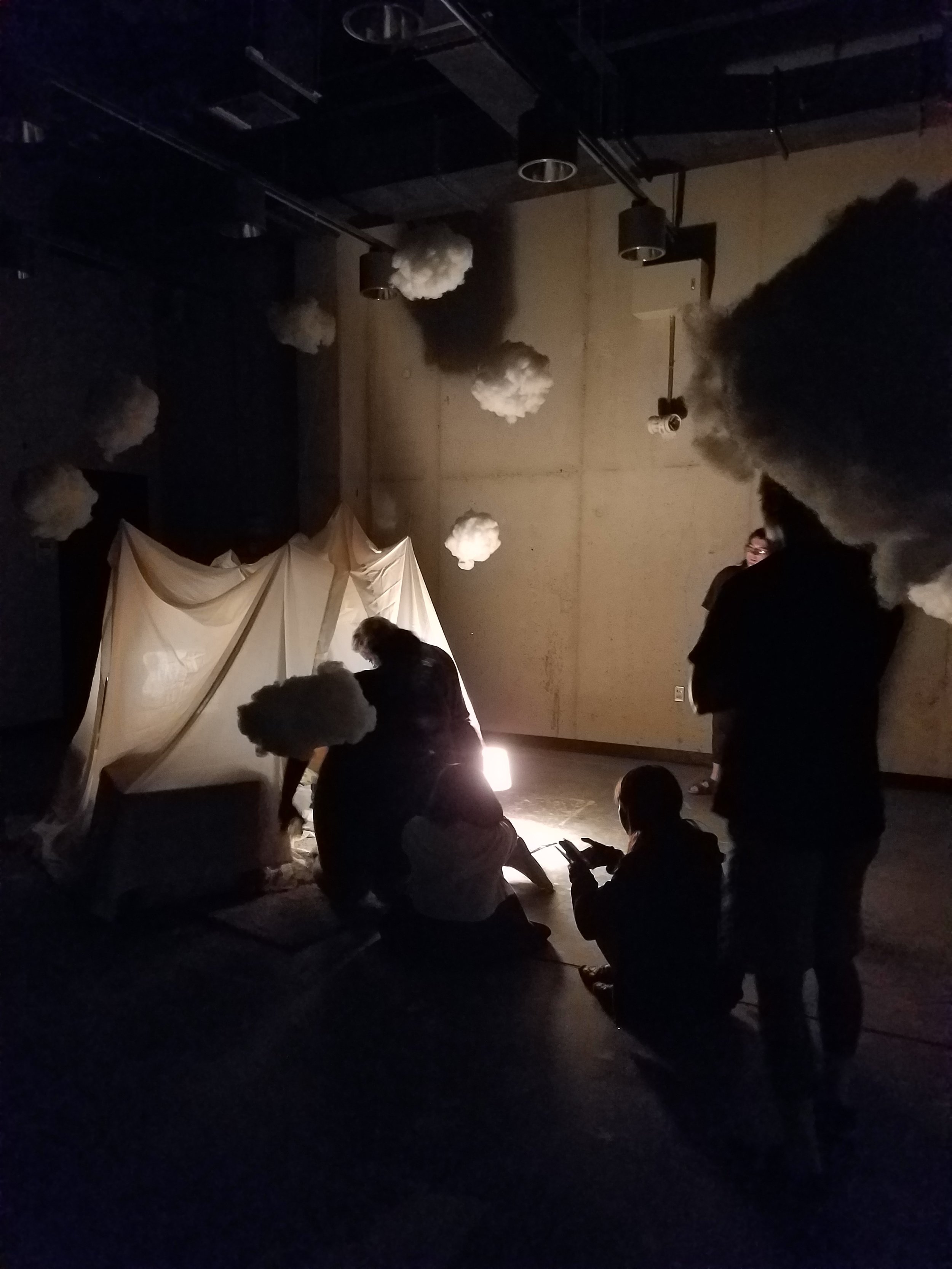

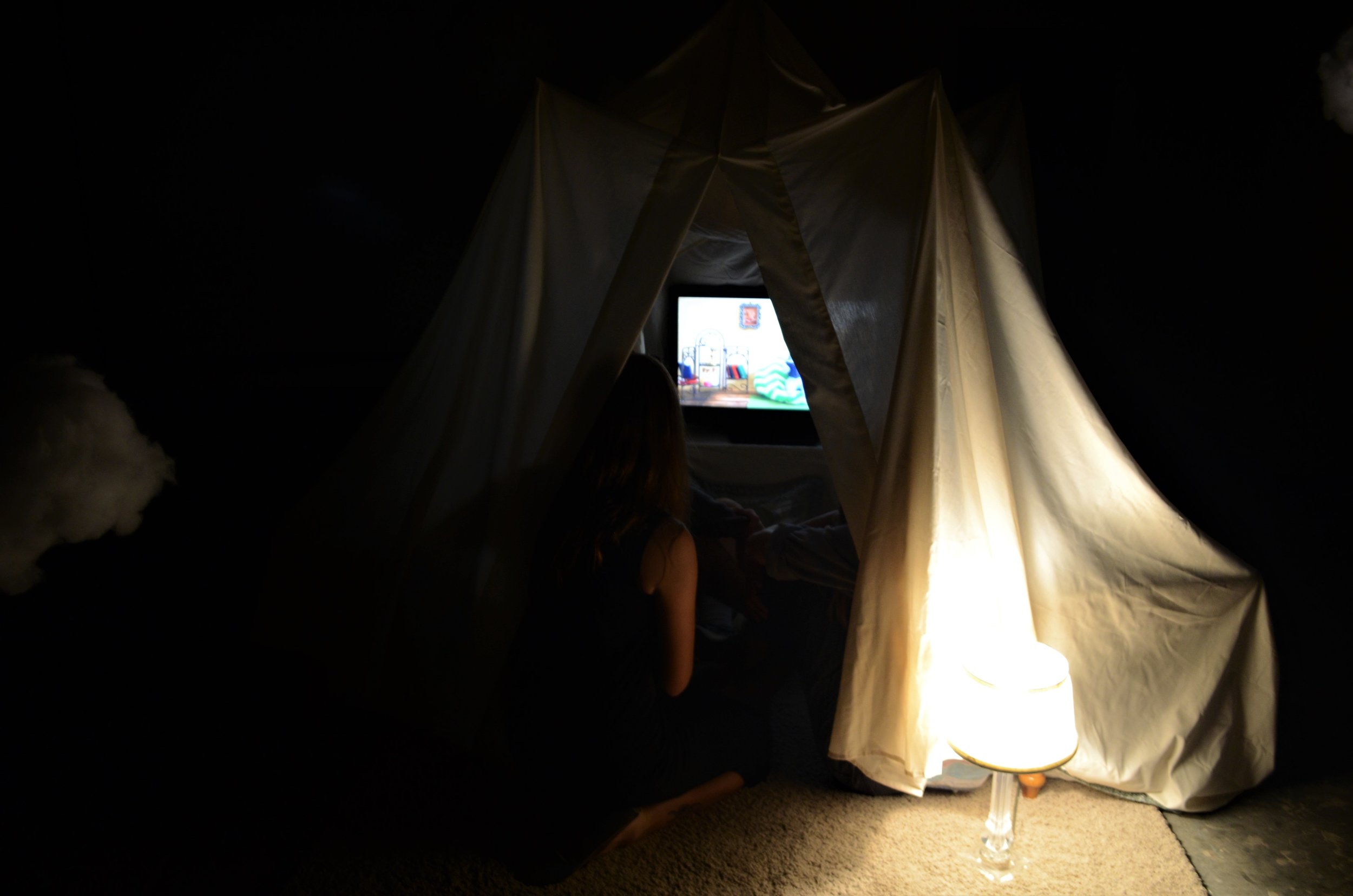
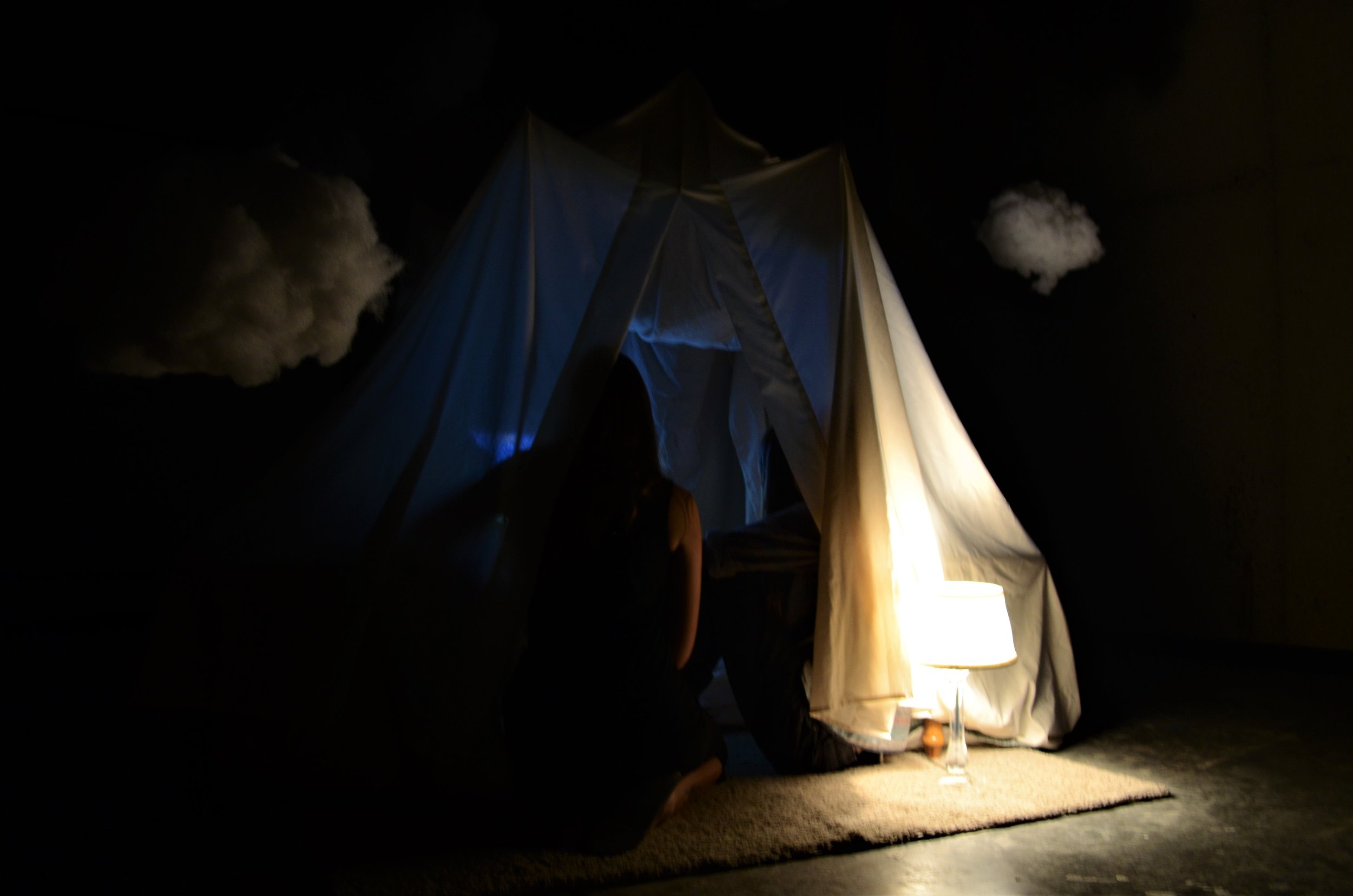
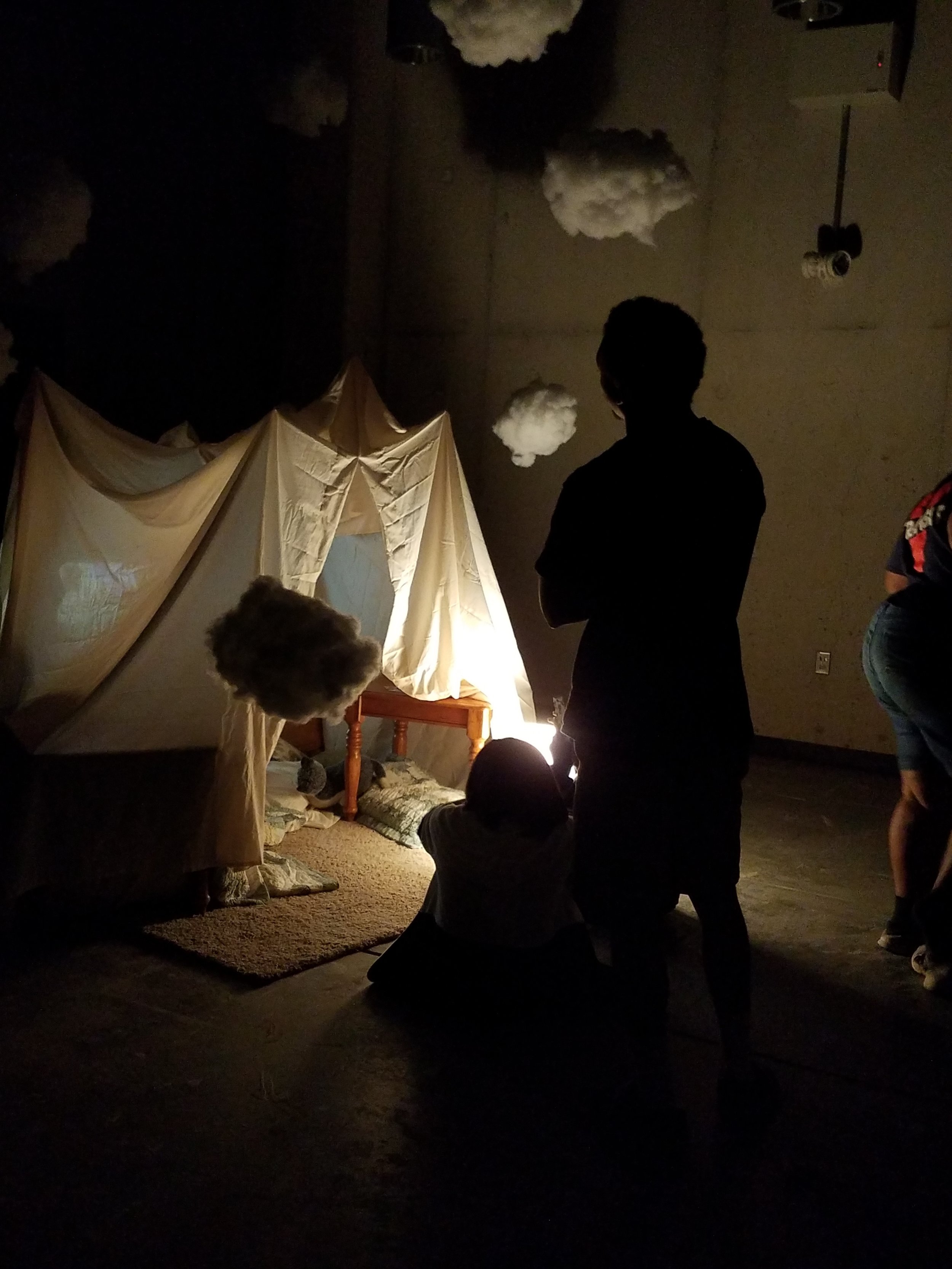
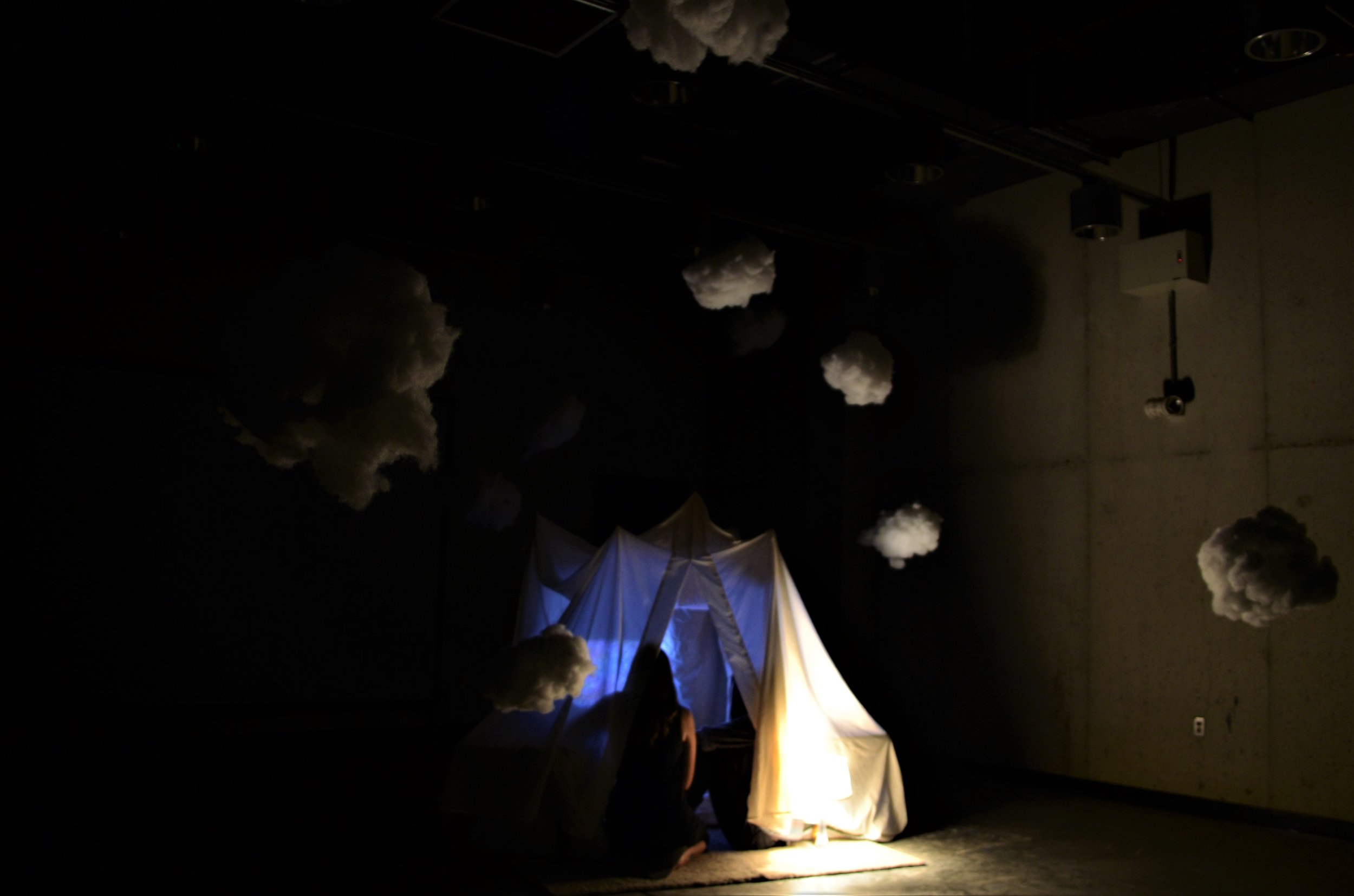
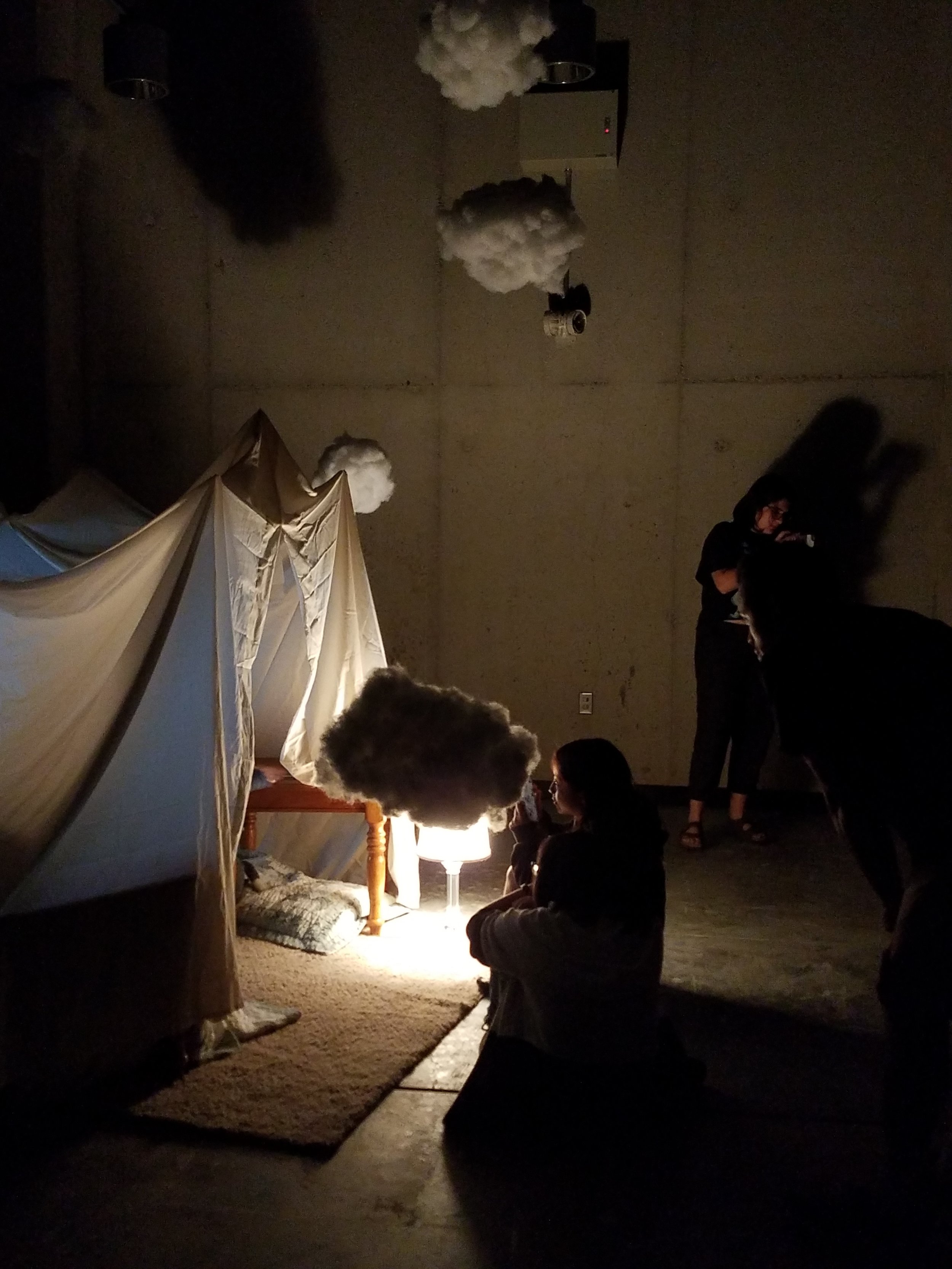
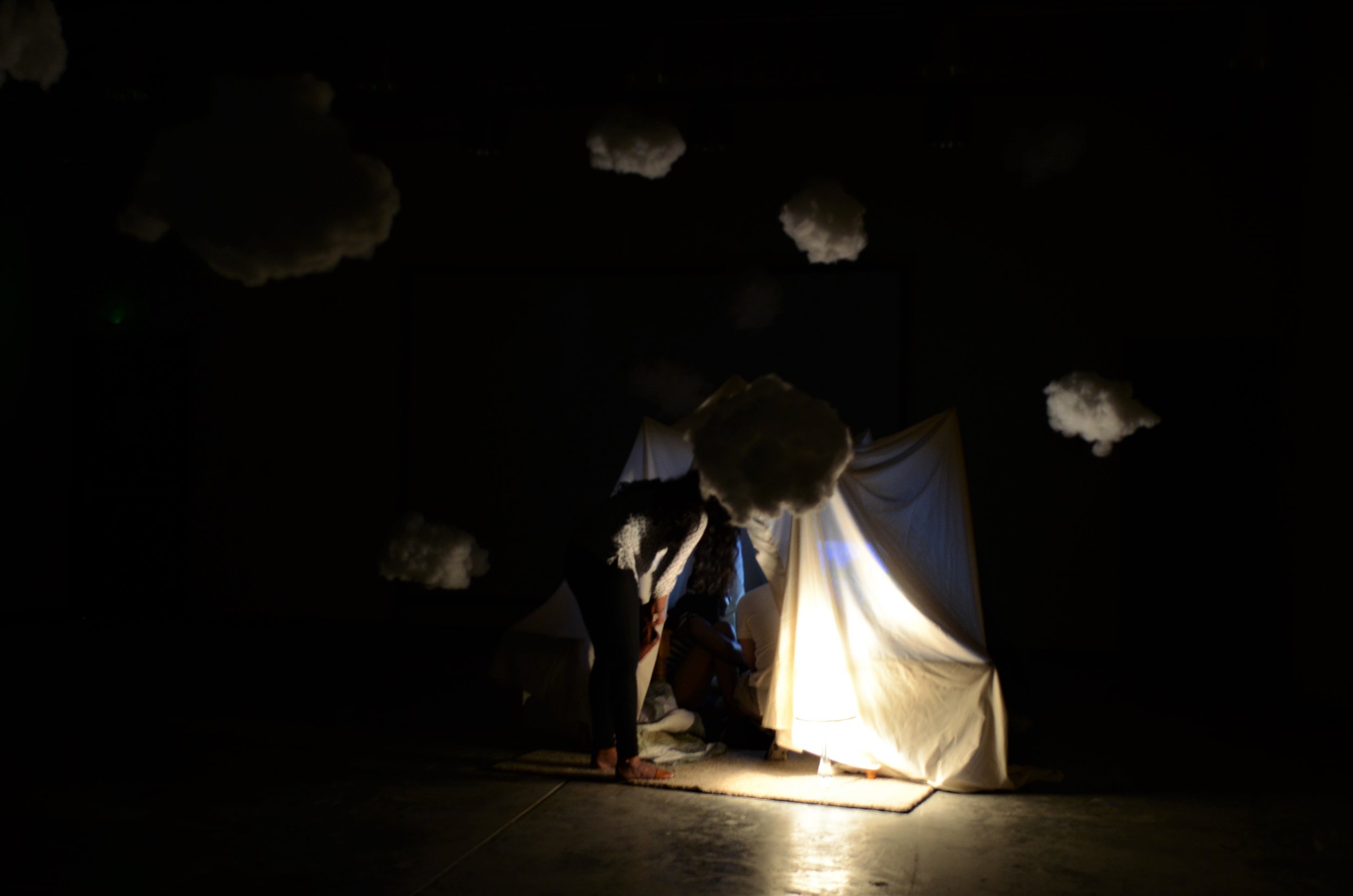
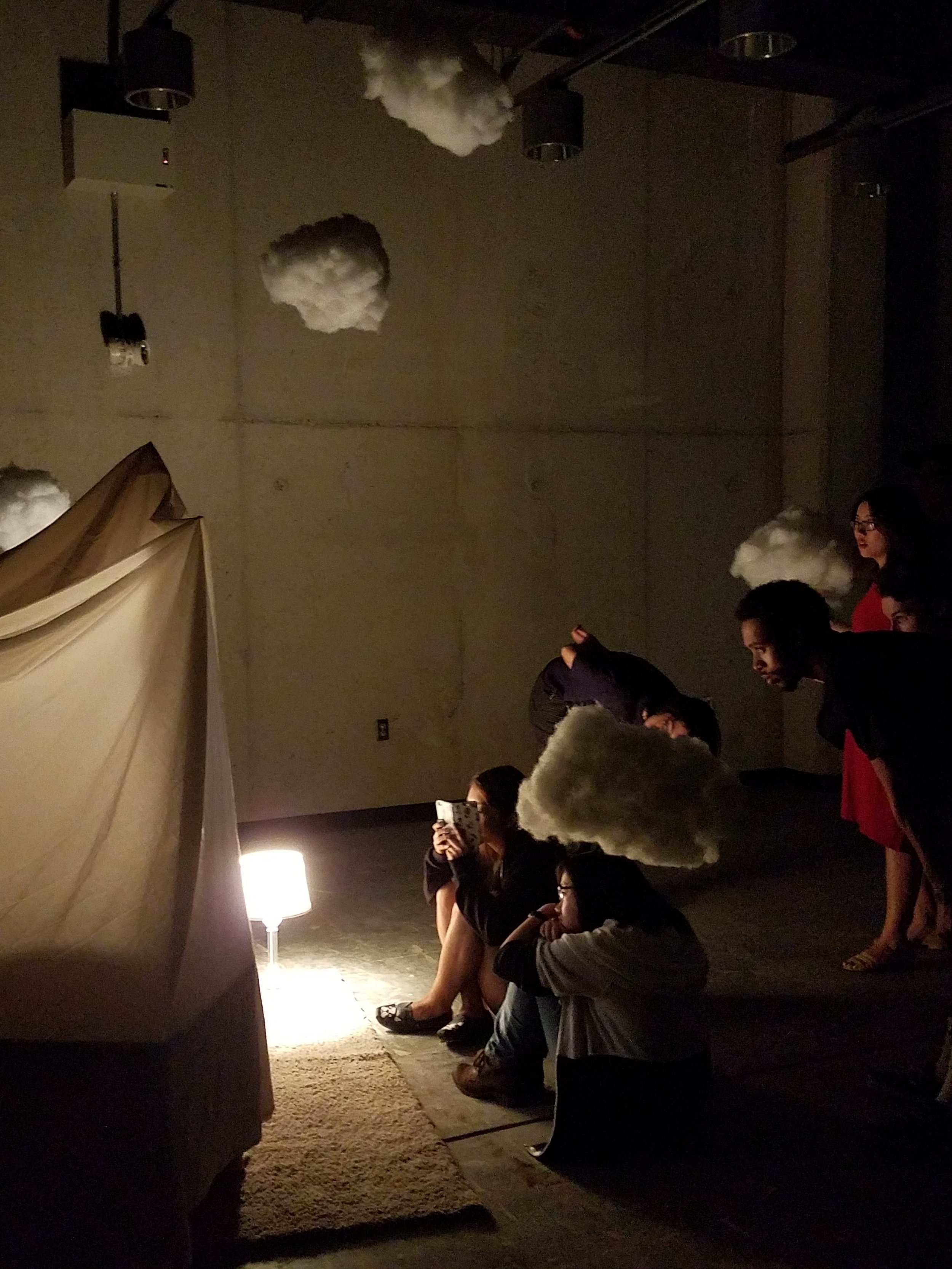
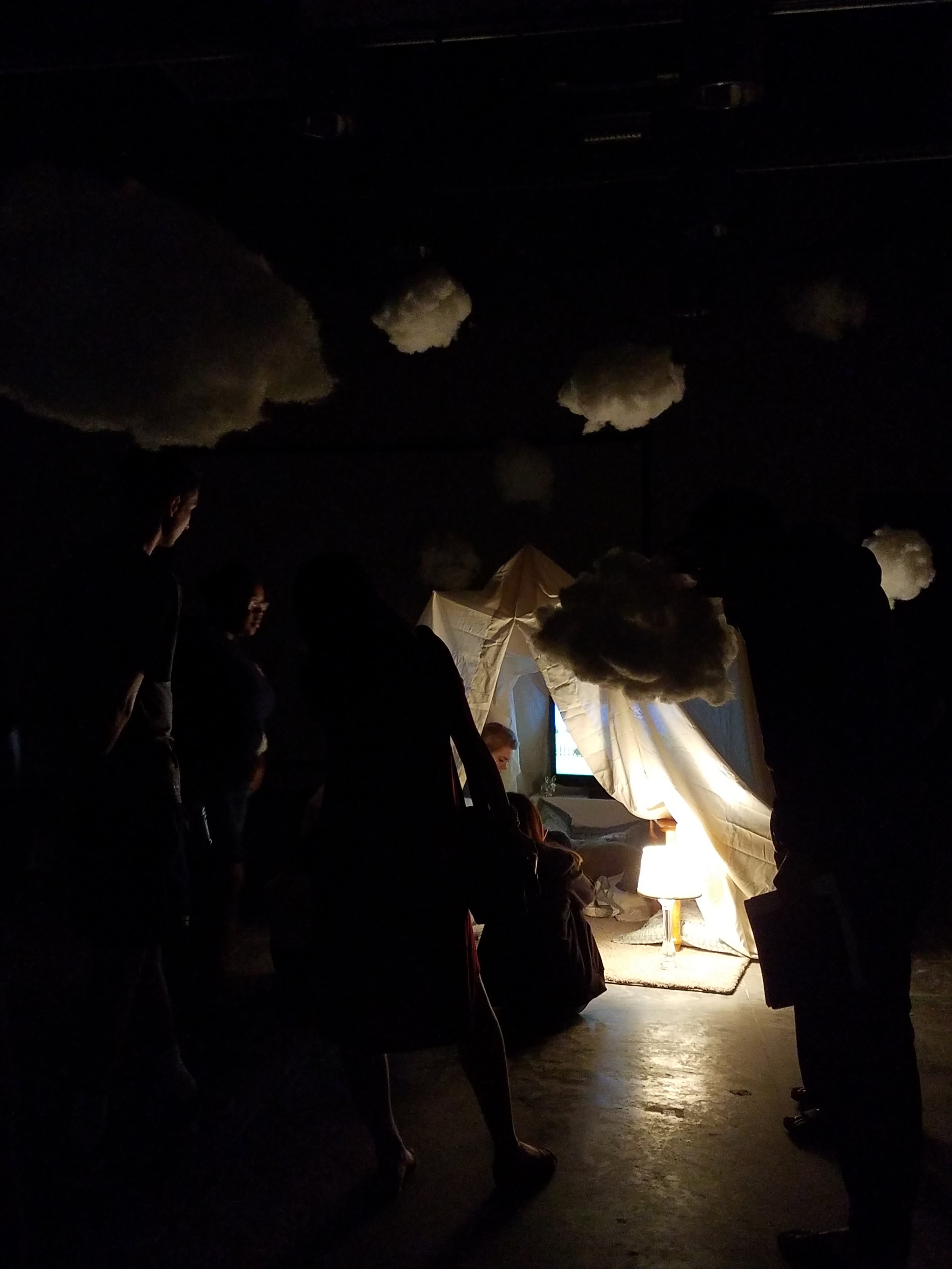
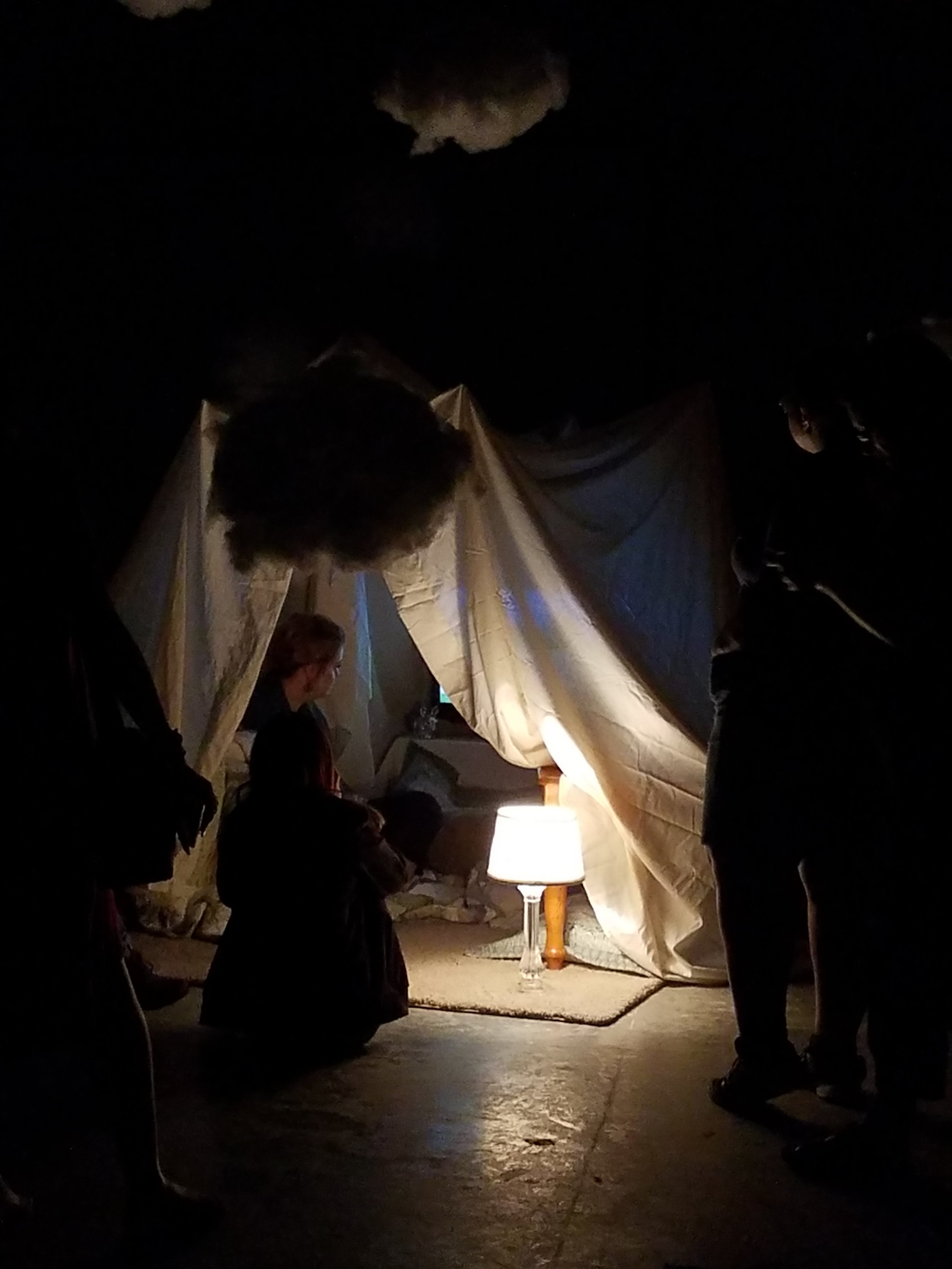
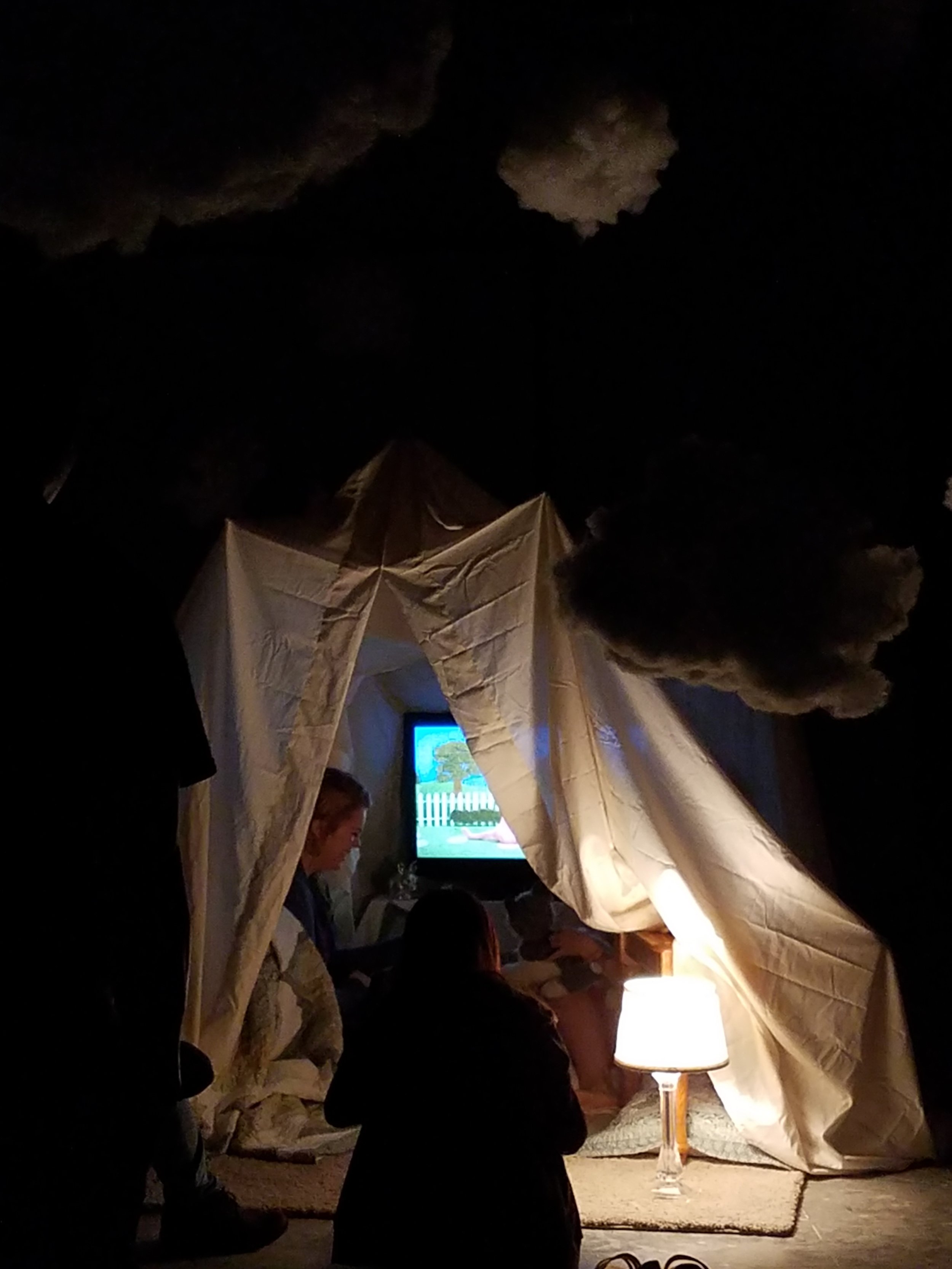

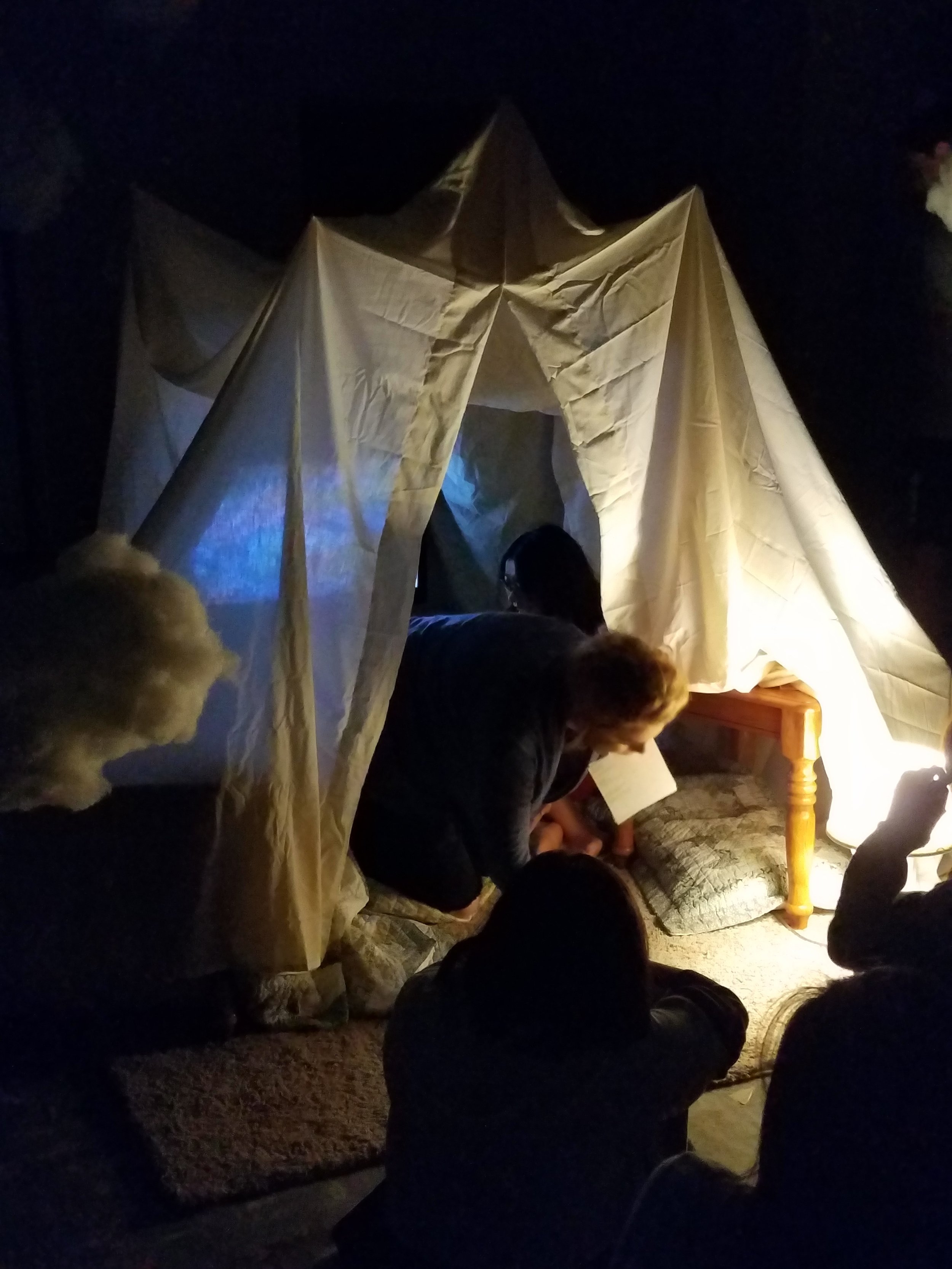
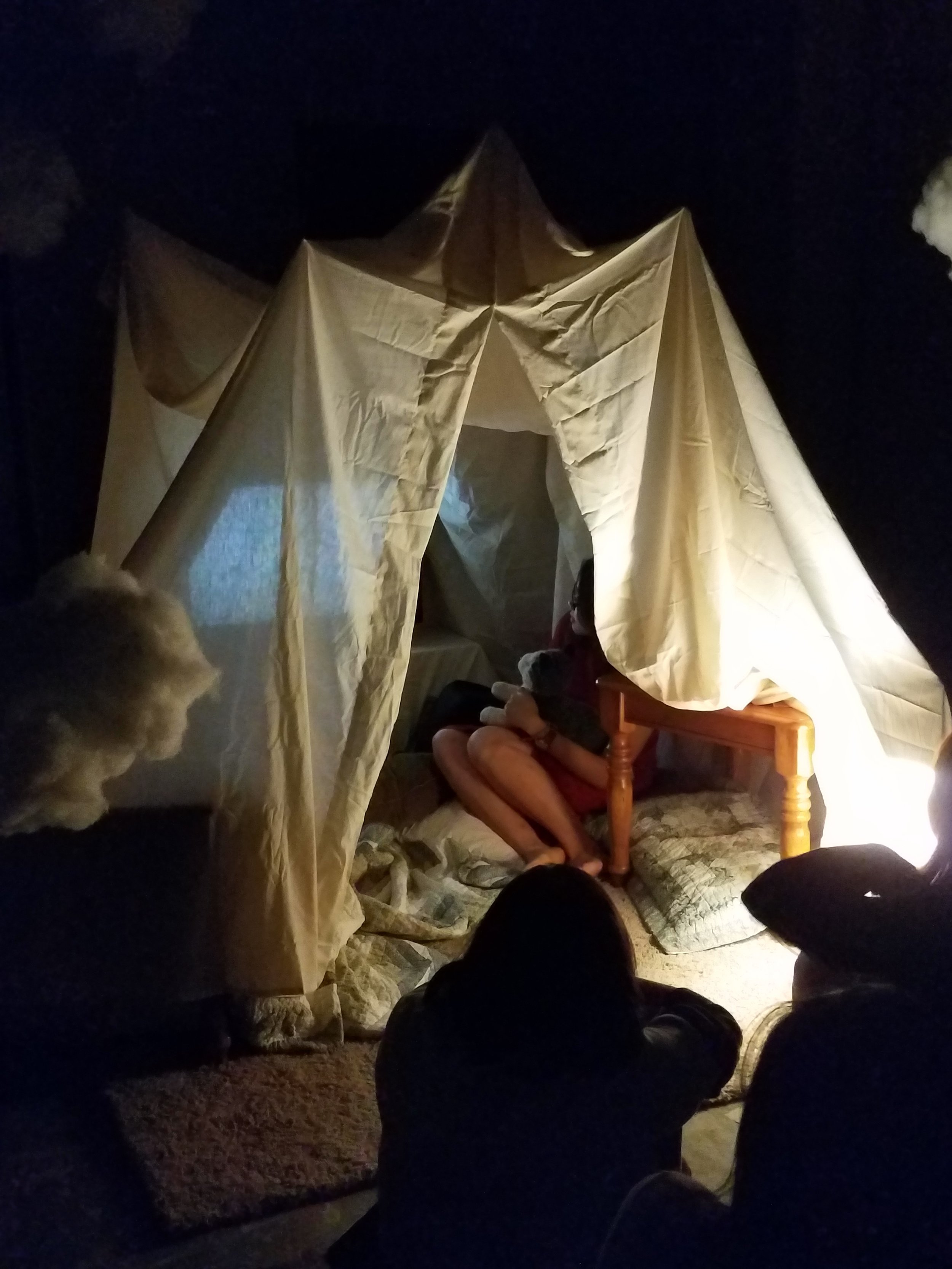
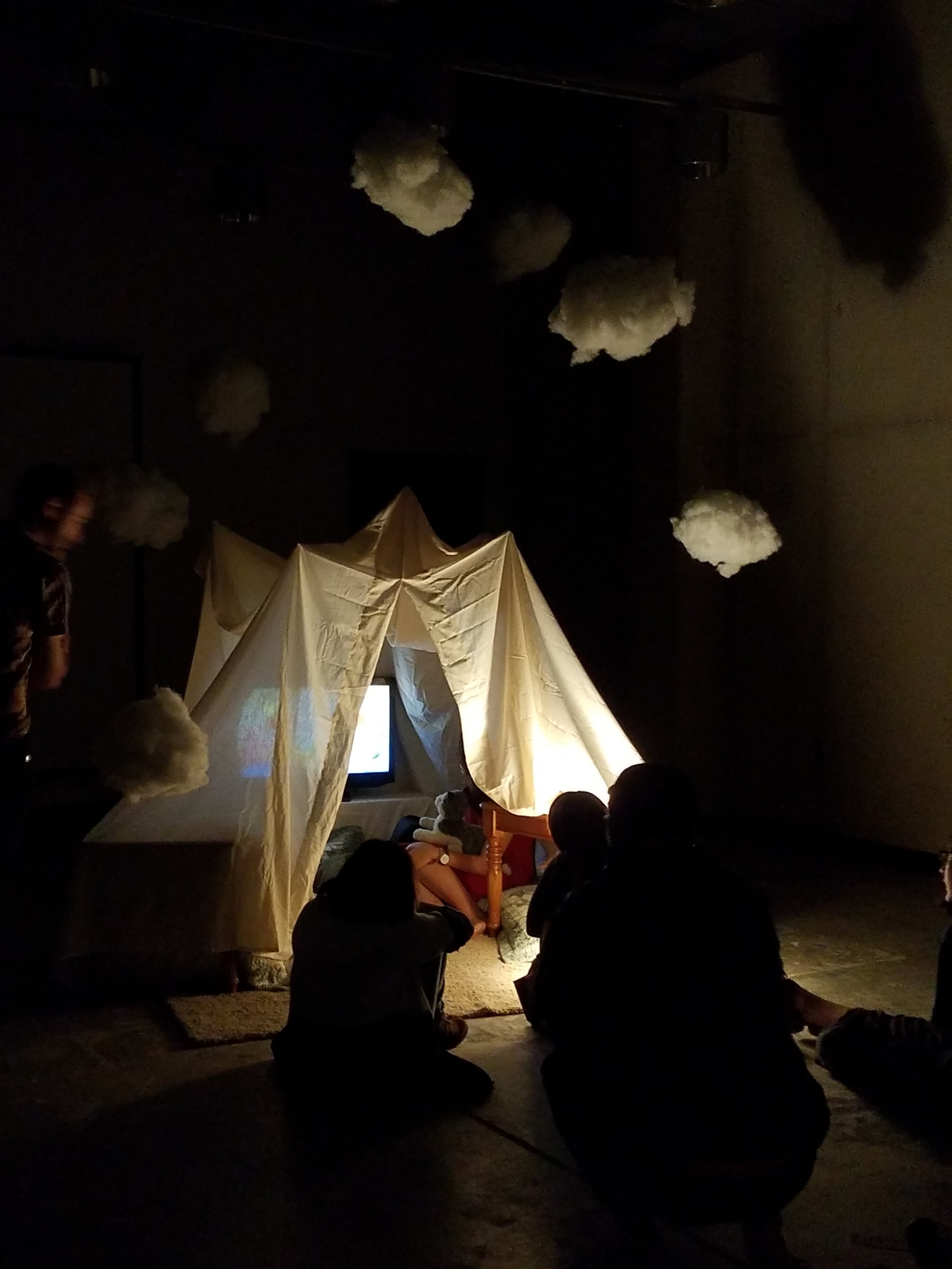

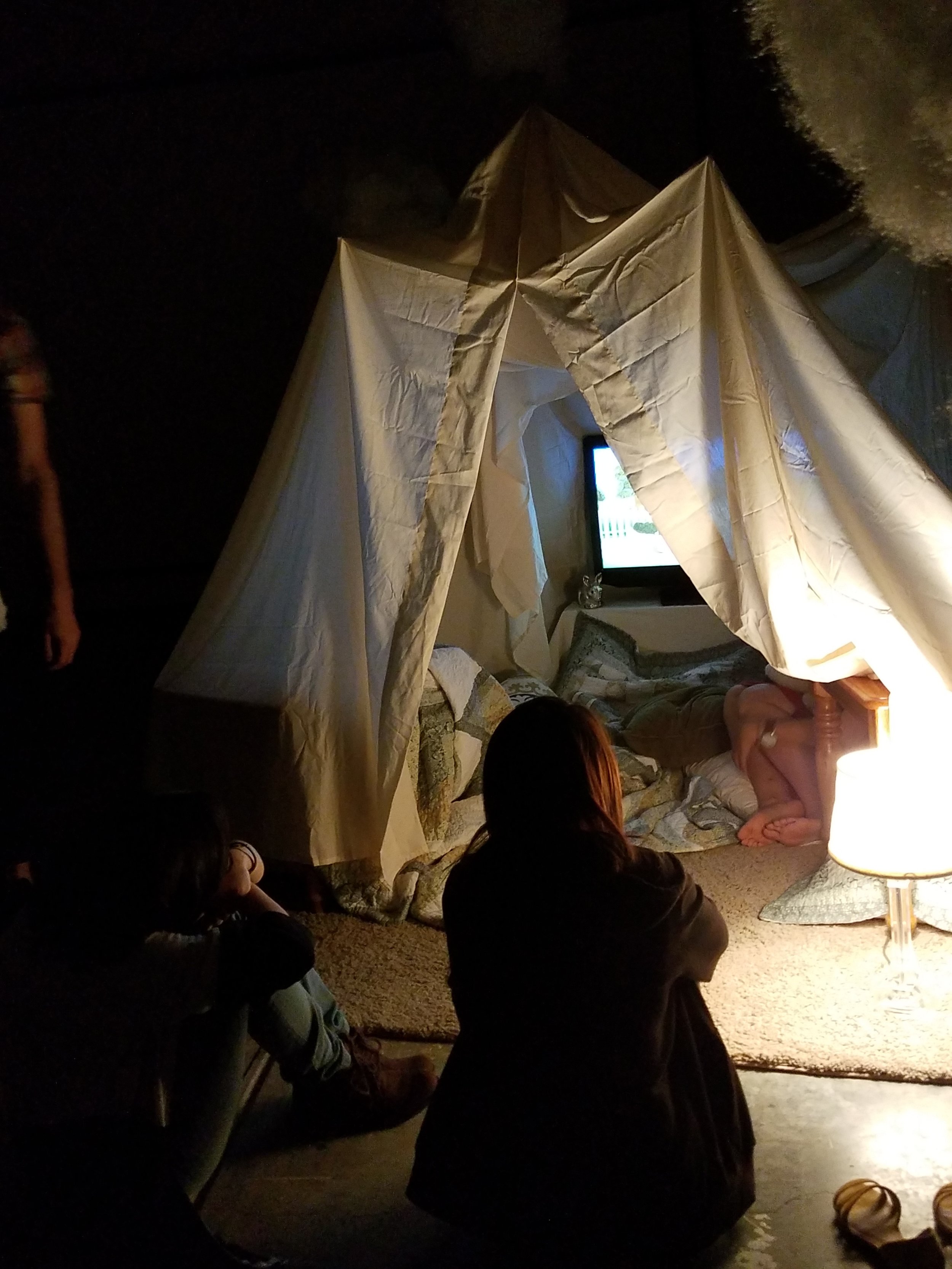
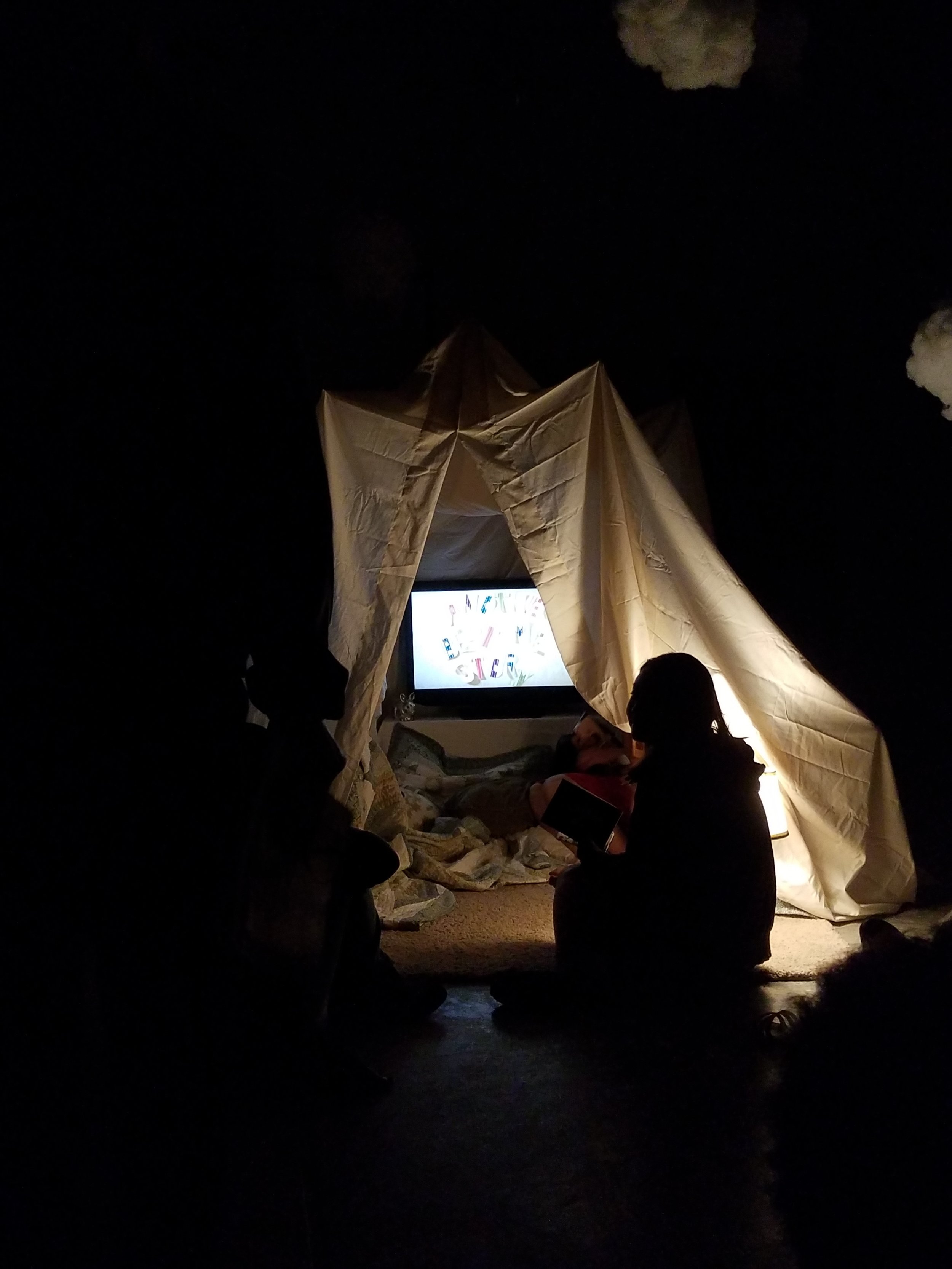
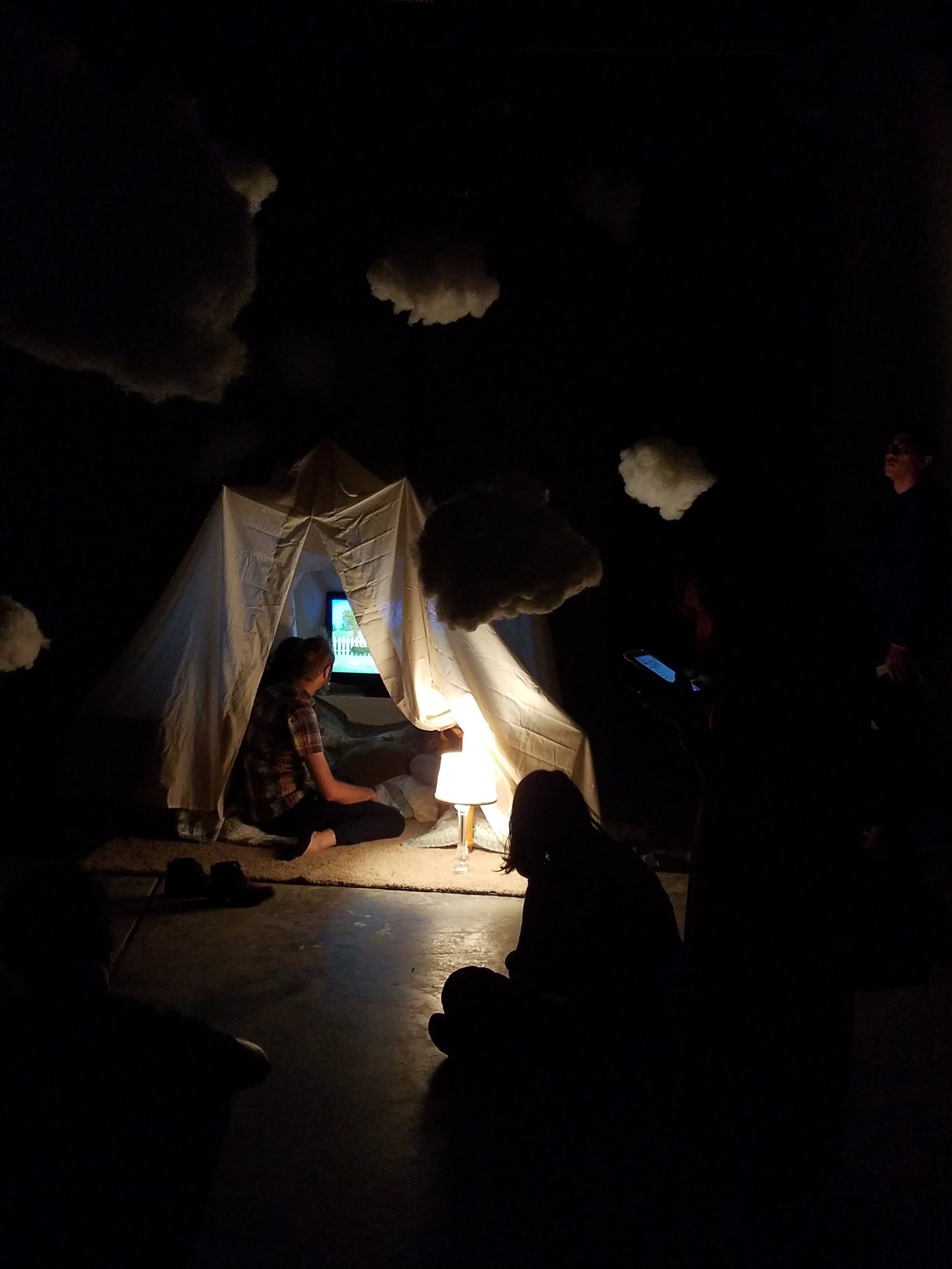
You may think you know what you want. You're wrong. No worries, we'll teach you.
Another Bedtime Story is an installation consisting of an episodic claymation nestled within a child's fort. The television is surrounded by pillows, bedding, a single lamp, and fluffy clouds floating within the empty, dim place.
I have always had an infatuation with childhood, and my infatuation can be linked to my upbringing and wishes to never leave childhood. I never wanted to grow up and enter adulthood, it seemed to me that adults are constantly busy, going to work too much, and there is little time for play. I do not know where childhood ends, and I am beginning to believe that it may not actually end, we just learn how to place childish tendencies beneath the facade of "adult," before they eventually disappear. When one grows up, pieces of individuality can be pushed out by what is understood as proper behavior and the pressures of being a "good" adult. My favorite distinction is that of "immature" and "mature," you are either acting properly or not, a one or the other scenario that is unsurprising in a binary world. Within my piece, Another Bedtime Story, I am suggesting not that the separation between youth and adulthood be removed, but instead that desires and dreams from childhood are encouraged and heard before what it means to be "successful" or "worthy" as an adult is imposed, to amend the problematic imbalance between what one desires and what one is told to desire.
Another Bedtime Story is a video installation piece consisting of a single channel video playing on a television which is nestled within the space of a "child's fort." The installation takes place within a dark room, the only light coming from the television and a small bedside table lamp and sound coming from the piece itself and those who are viewing it. The installation is set away from where viewers enter the space, and a path of hanging clouds lead the viewers to the fort centerpiece. The television, sits on top of a small area rug with multi-patterned and colored pillows and blankets crowded around the television's base. A stuffed animal is cuddled in the bedding, a piggy-bank shaped like a rabbit sits next to the television, and two end tables frame the opening to the fort, creating a line of sight to the television. There are bed sheets and blankets hanging from the ceiling, draping around the television, and the lamp sits near the edge of the fort, illuminating the fluffy clouds which loom above and around the piece. The physical installation of Another Bedtime Story transforms the space into a dreamy environment, a place where children find safety, nestled on the floor in soft, colorful bedding, while also touching on an eerie feeling as clouds slowly turn in empty. stagnant space.
The video playing on the television is a looping claymation featuring cute pastel colored animals in short episodic scenes and mock-advertisements. The characters consist of a pink kitten, white bunny, blue puppy, and yellow duck, acting in a number of settings such as a party, spring garden, living room, and dining room. Both the animals and the environments are colorful and quaintly dressed with props and objects to create a homey and playful setting. The episodes are separated by the use of a clay style "static" which cues an interruption, switching to another episode only to be resumed later in the video. The characters inhabit the roles of both "the naive" and "the wiser," channeling their fellow animals as well as being channeled themselves. The episodes deal with a number of themes such as imagination, priority, desire, and rewards, placing the characters in situations in which their dreams and outlooks on life are questioned by others. One episode shows the duck hitting a briefcase piñata at a party while the other animal characters watch. After the duck inflicts enough force, the briefcase opens and only a single slip of paper is sticking out. The duck lifts the blindfold and snatches the paper from the briefcase only to read that it is a pay-check.
Video Still, Another Bedtime Story, 2017
Despite the duck's disappointment, his animal companions reassure him that this is what is exciting and this is what they live for, before leaving the duck alone to weep. Another episode features the kitten carrying a piggy bank near the bunny in one scene, and a handful of dreams in another episode. In both sequences the kitten sneezes, and the bunny jumps into action to save the piggy bank before it hits the ground and smashes, but only helps the kitten dispose of the broken dreams after they have already been spilled and spoiled. The episode depicts priority for the monetary over ensuring the preservation of one's dreams, even though the bunny could have saved the dreams just as he did for the bank.
Video Stills, Another Bedtime Story, 2017
The sound for the claymation consists of borrowed scores and sound effects which change from episode to episode, the only constant being the static that sounds between each cut. The characters within the video do not speak, and there are no voices or spoken language within the piece, and altogether there are limited words within the episodes. The zany sound effects add to the childish nature of the claymation, and enhance the confusion of combining childlike aesthetic with deeper and more troubling meanings. In one of my earlier pieces, Sudsduction, I similarly combined the playful nature of stop-motion with mature themes such as adultery, jealousy, and murder, to showcase societal structures such as the reinforcement of gender binaries by consumerist institutions. Since stop-motion and animation are often associated with younger audiences, I use these mediums to present heavier concepts through a puerile lens, as mute clay animals in Another Bedtime Story.
The inspiration for my stop-motion piece style and process pulls on a few different films including Henry Selick's Coraline, Aardman Animation's Chicken Run, and Don Herzfeldt's short film, Rejected. Coraline and Chicken Run are both children's stop-motion films, but they include more morbid themes such as deception, entrapment, and death. The films have a fun and whimsical feel, but they certainly do not hesitate to explore heavier, darker themes. Herzfeldt's Rejected short film is the inspiration behind my layout for my video's quick cuts and mixing of episodes. Rejected features a multitude of simplistic characters which appear in short sequences, referencing and returning to one another as the short film progresses. I chose to create linear environment layouts similar to those found in Rejected, and feature simple characters and quick scenes which pay homage to one another, connecting separate episodes into a singular piece. I choose to work with stop-motion because of the childlike aesthetic and physicality of the process, as a stop-motion piece has a physical presence from those who create it, despite their absence in the piece which an audience views. Stop-motion appears on screen as an independent form, but the piece is completely dependent on movement from others in order to function. There is a sense of uncontested control within stop-motion, but also a sense of magic and fantastic illusion.
Another Bedtime Story is a piece about growing up, about navigating the loss of childhood as one traverses the realm of adulthood and responsibility. This piece draws parallels to a previous installation, Happy Birthdays!, which depicts the mourning of youth or childhood as age increases, and Another Bedtime Story tugs on a similar theme. This piece draws a connection to me that is stronger than prior work I have created, as it directly reflects a narrative I have lived through and come to understand. I have experienced the pressures of what it means to be an adult and how all too often childhood dreams and desires are equated with the unrealistic or unimportant. Reaching adulthood means you are now responsible, and responsibility means making the right decisions to be the most successful you can be, and this sometimes means leaving behind childhood desires. When we are growing up we are taught what to want, we see it in media, hear it from our parents and family, and countless other outlets which reflect the same troubling societal expectation: you desire success, and this often translates to mean excelling monetarily. This piece pushes back on the value system put in place by a capitalist structure, a seemingly endless need to make a profit and consume, social prestige and respect reflecting the money they make and the job they inhabit. Another Bedtime Story embraces more humanistic ideals, emphasizing individual expression and desires which reach beyond consumption and the roles determined by capitalism. The pressure of succeeding within capitalist structures falls on an individual's ability to earn, creating a tiered system in which pursuing capital outweighs the pursuit of genuine interests, dollars over dreams. I do not deny money's importance in life, however, it is crucial to realize that setting a strict standard of success leads to sacrifices of individuality, sacrifices that some do not realize they are making because it is just the way things are. I also want to note that this is not universal, and some may never experience this pull between personal desires and expected desires, but Another Bedtime Story serves to acknowledge that this pull exists.
Another Bedtime Story reflects how the suppression of childhood desires/tendencies can lead to the creation of a value system based in materialism and social status rather than individuality and personal dreams. As I mentioned earlier, stop-motion requires outside action in order to come to fruition on the screen, and this idea of outside influence relates directly to the content within my piece which refers to the social and cultural constructs' influences on children. There are a number of theories which explore child development, but Bandura's theory on social learning and Vygotsky's sociocultural theory are two that shine through Another Bedtime Story prevalently. The characters often behave and act in response to observing one another. The characters see their pals' ideologies and behaviors through observing actions, decisions, motives, and tiers of importance and then base their own decision making on their friends' actions, much like Bandura's social learning theory in which children learn how to behave based on observing and identifying others and their actions. This falls hand-in-hand with portions of Vygotsky'a sociocultural theory which suggests that children tend to inhabit roles which lead to a successful, functioning adulthood through make believe play, roles that people within the child's culture must first designate and introduce to them. What Another Bedtime Story taps into through characters and its design is the malleability, and often, vulnerability, of a child's mind, and how easy it is to influence and manipulate a child's understanding of worth, what is right, and who they should aspire to become. Children assume the roles of the characters they see. The piece is installed in a way children both tell and take in stories, within a space built from make believe, centered around a television that serves as the bright, all-knowing, entertaining teacher. The stories never end and they never change, continuously looping to drive home the same message over and over again, unable to explain more than one way of thinking. This piece urges viewers to question how we learn to measure success, and how readily able we are to overwrite the importance of individual, "childlike" dreams in the shadow of accumulating wealth and status, or what is valued as "adult." There is a balance to reach when measuring the worth of dreams with the worth of wealth, and how this dynamic is exhibited, observed, and understood within socio-cultural settings.
Happy Birthdays! (2016)
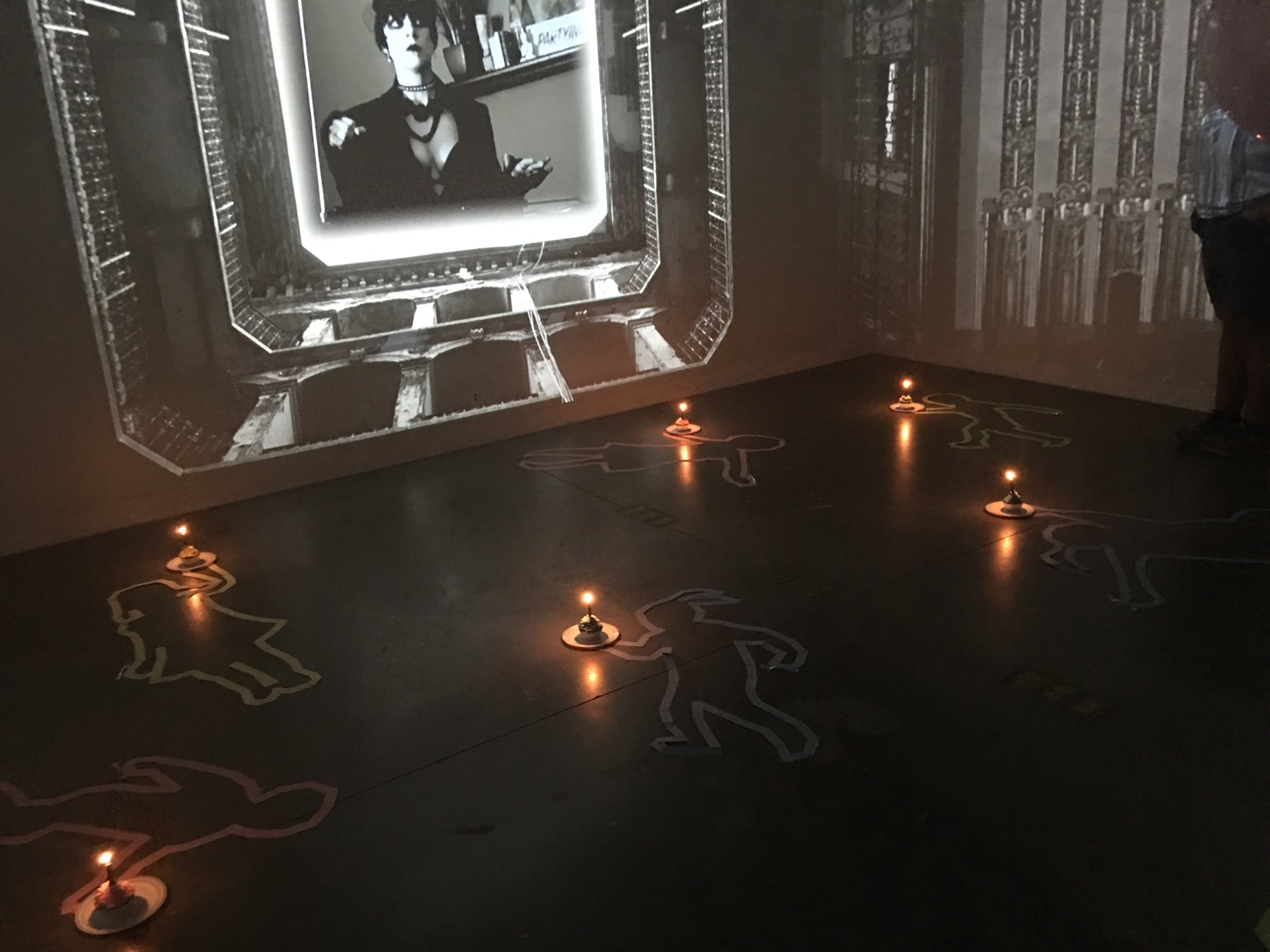
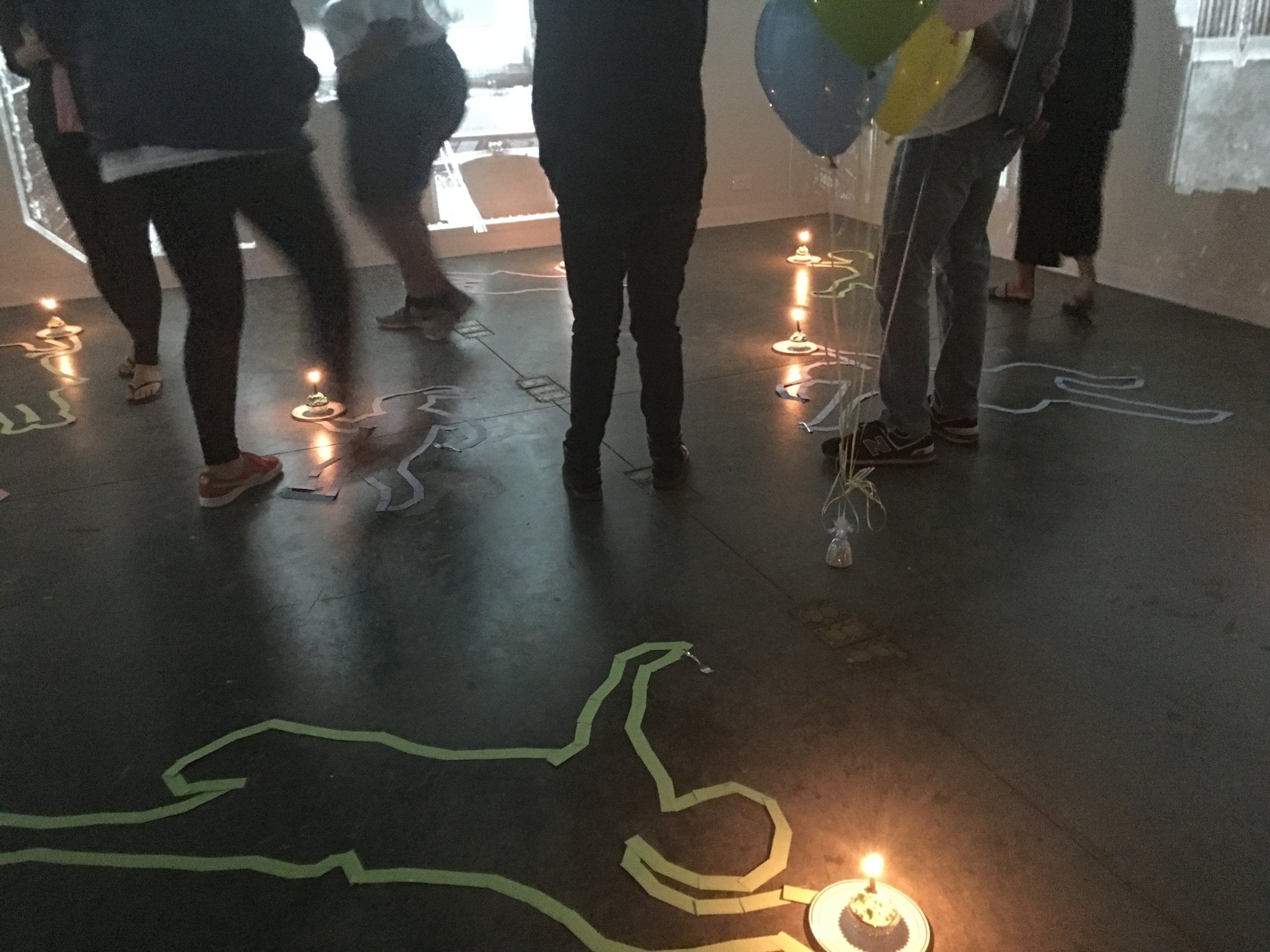
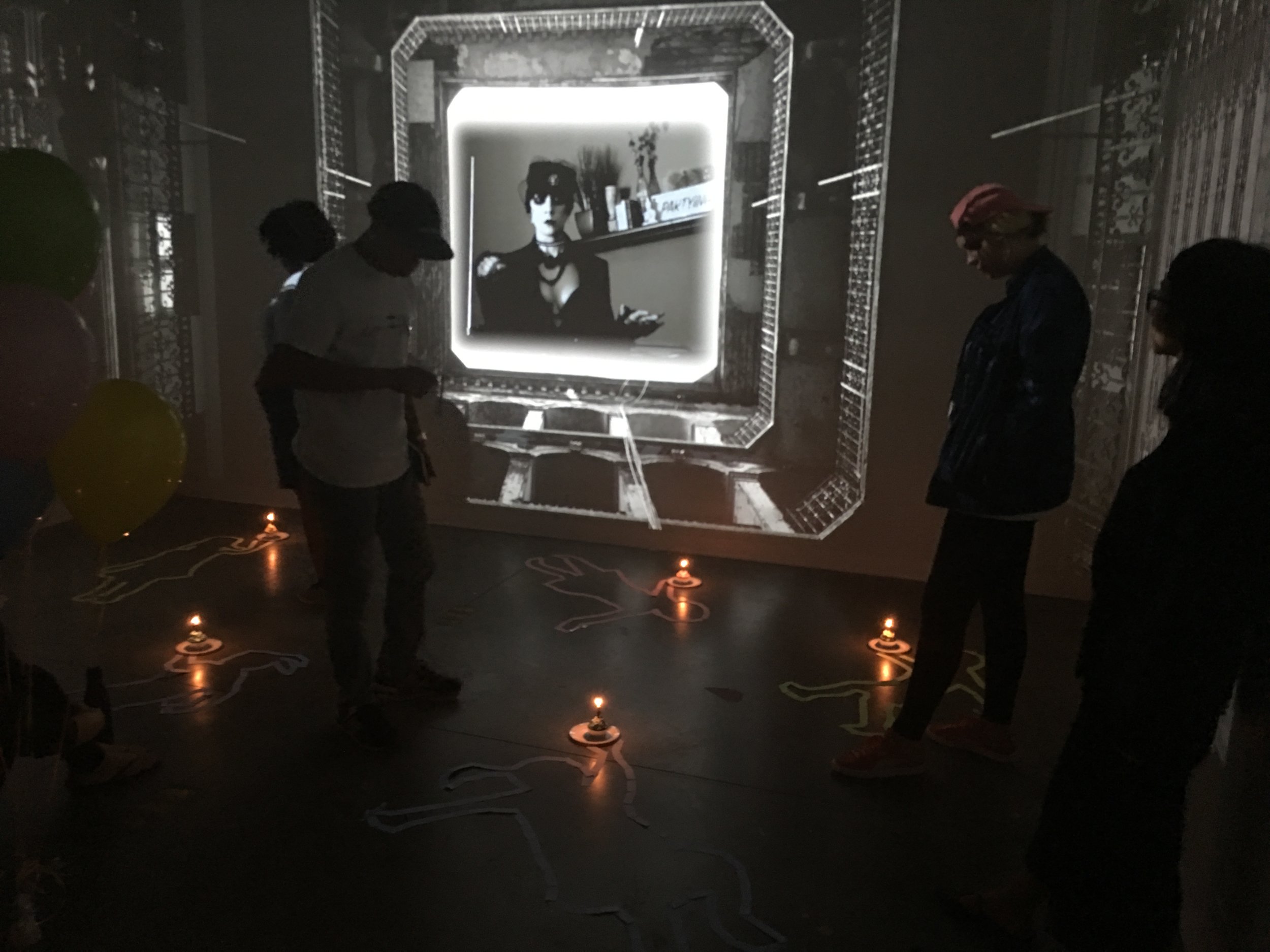
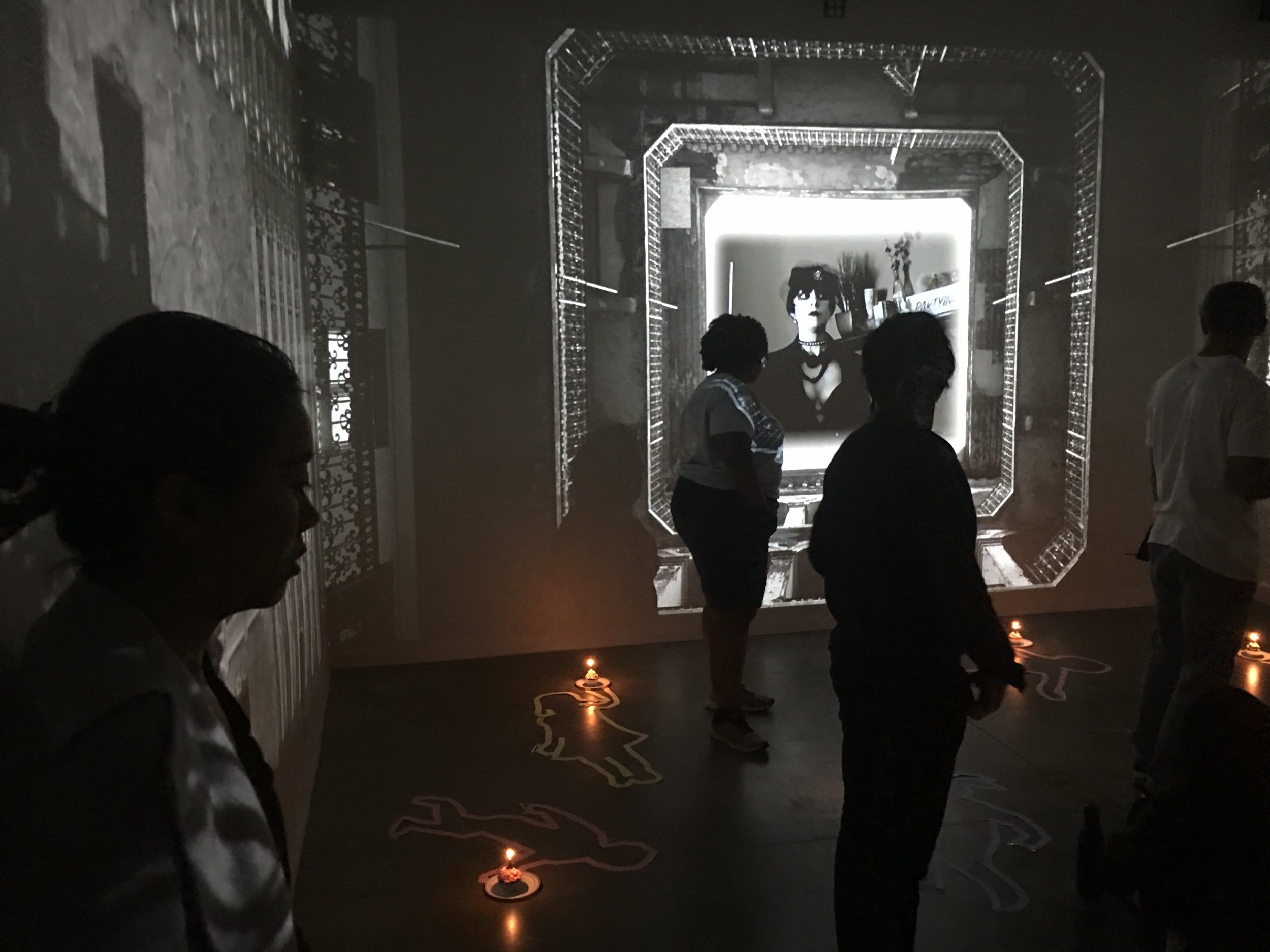
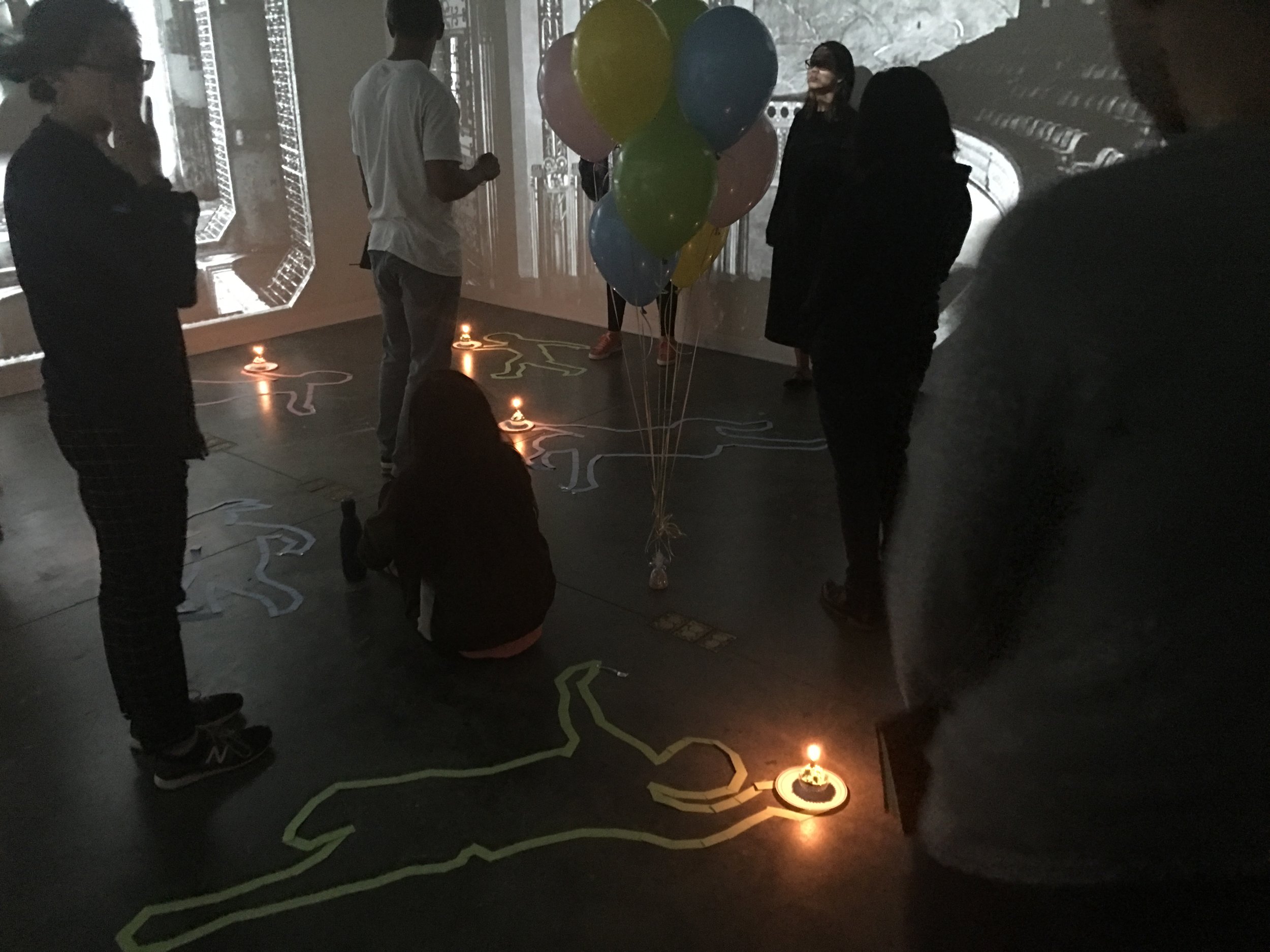
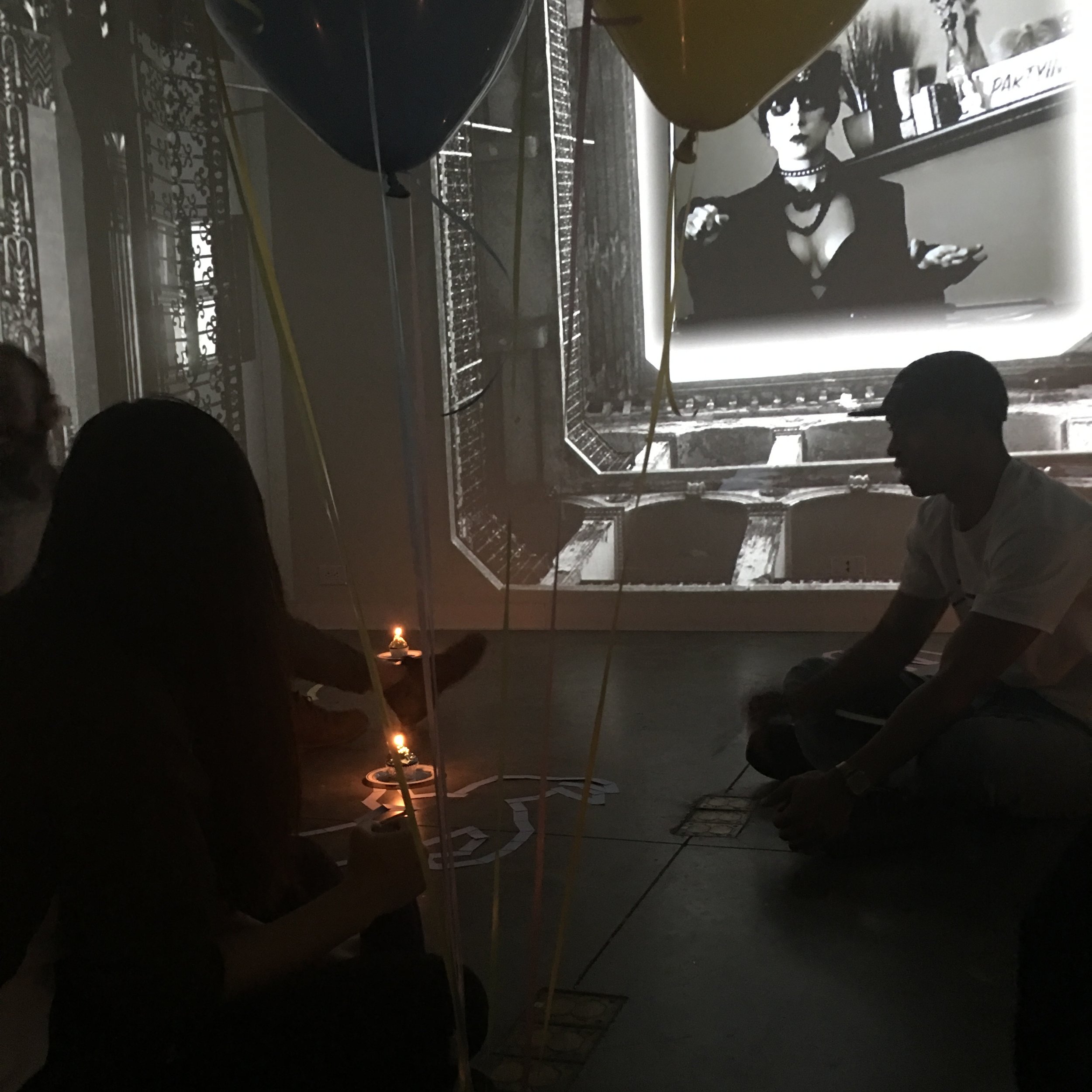
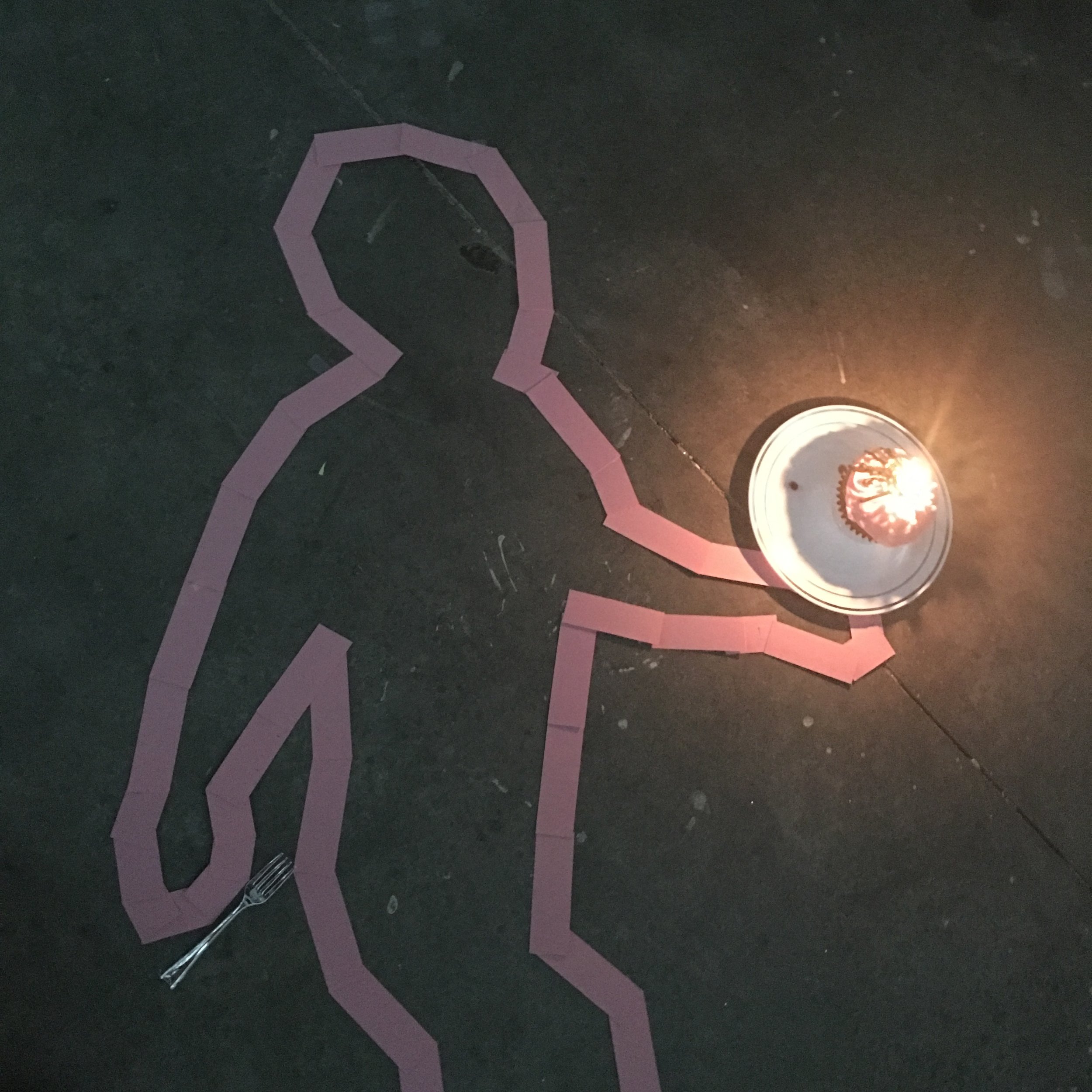
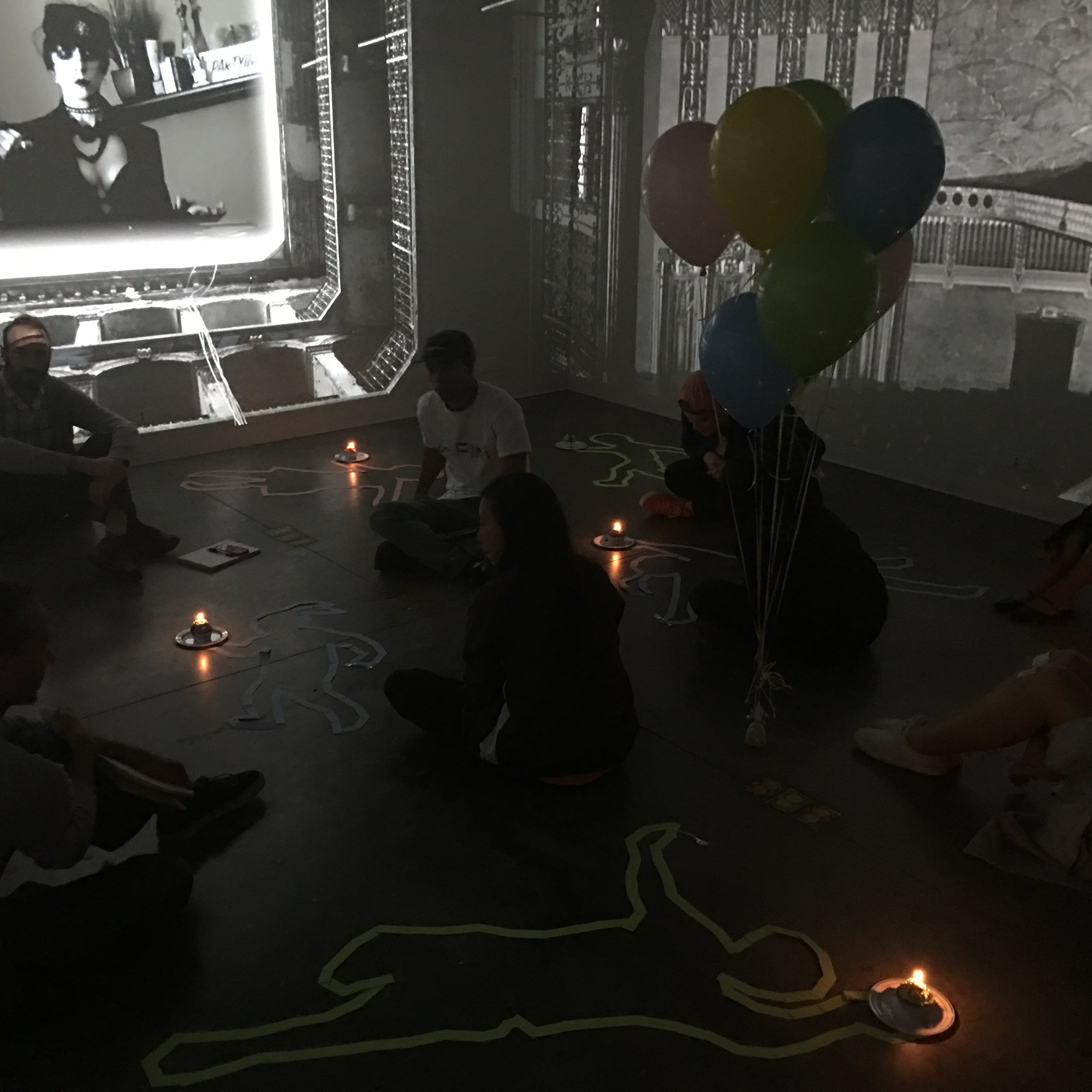
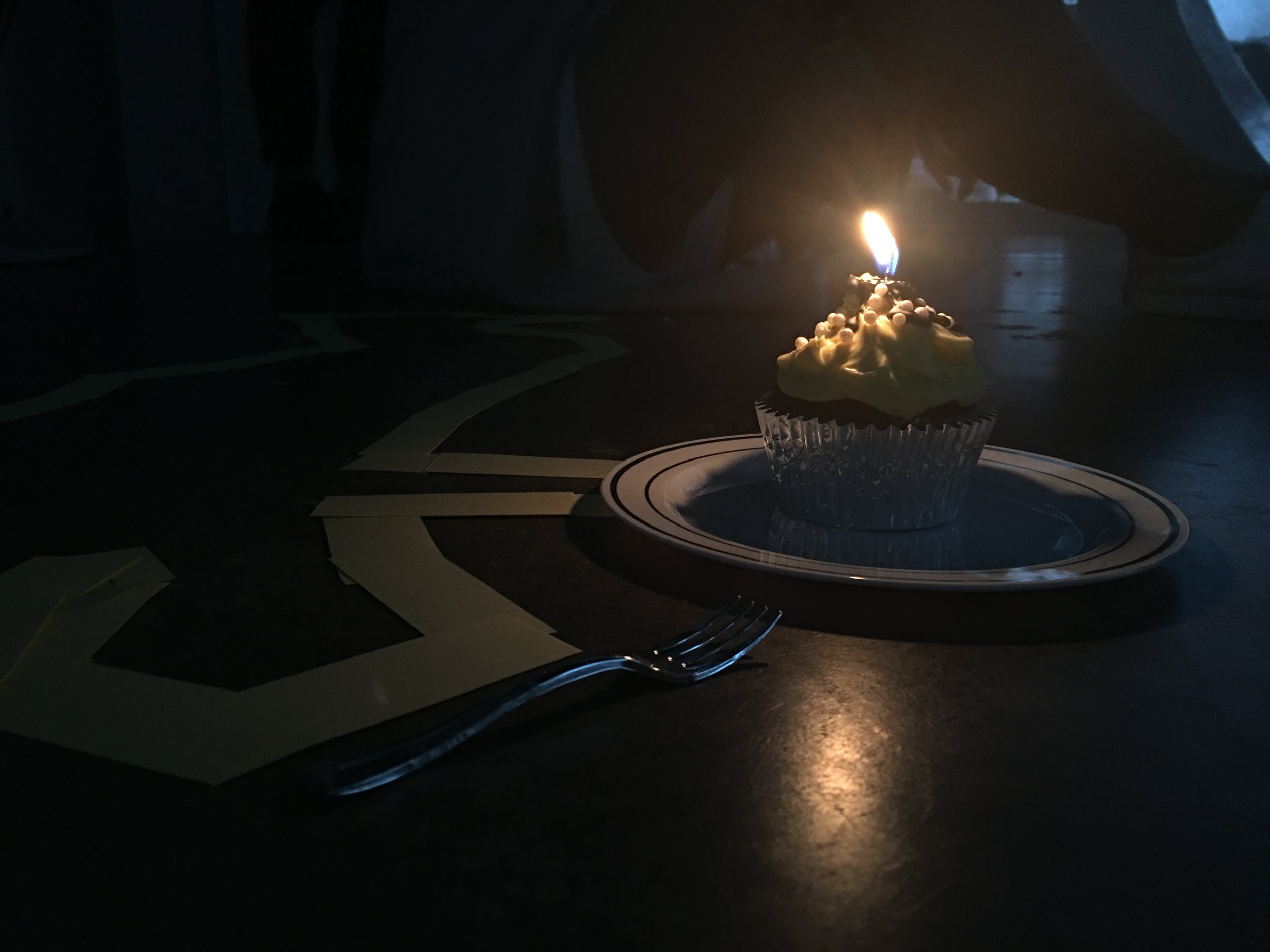
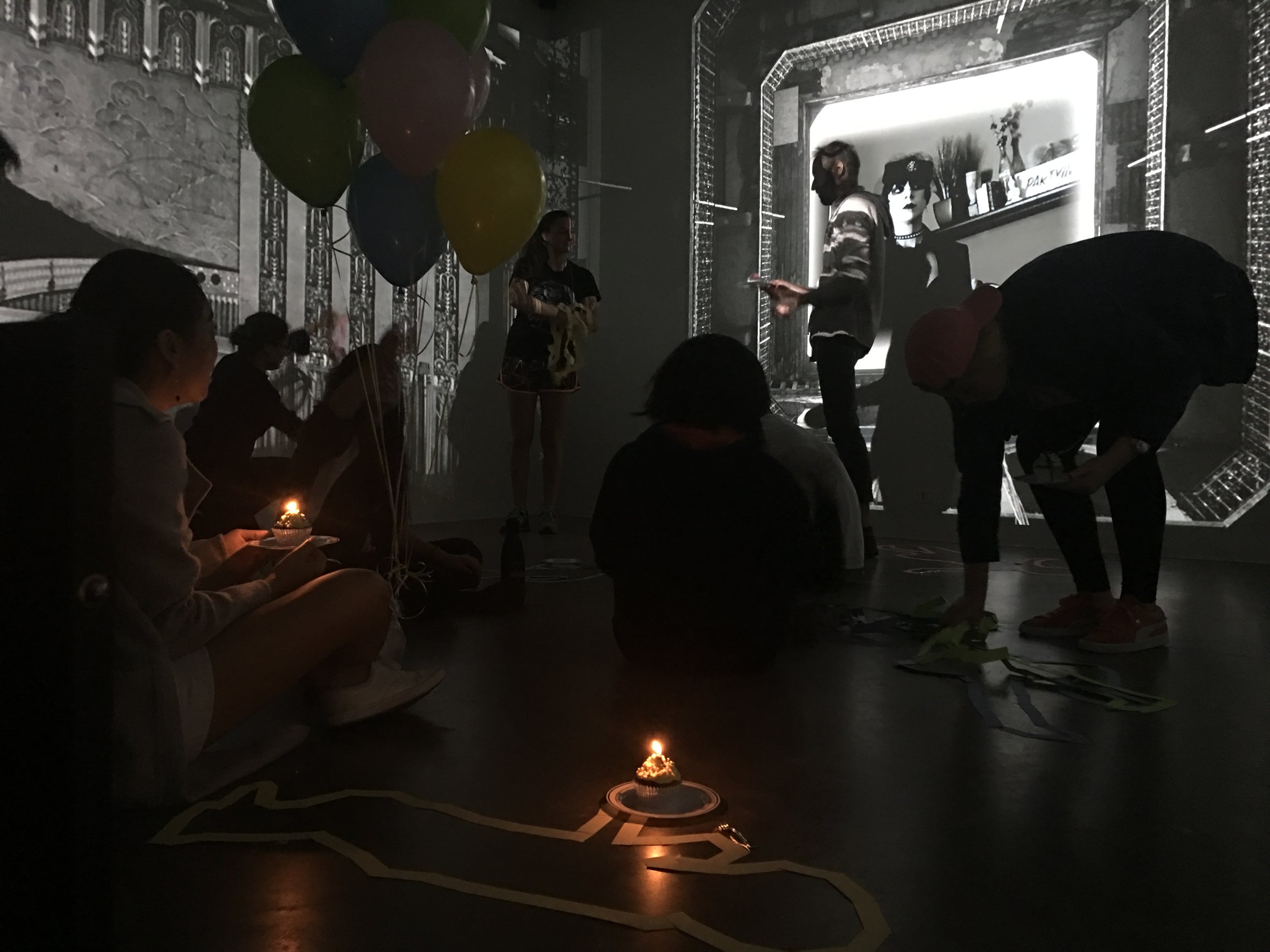
Birthdays are for you. Birthdays are for me. Birthdays are for everyone, even for those who have passed on. Hurray.
Happy Birthdays! is a digital video installation piece comprised of a three-channel video surrounding a space filled with props which create an intimate environment depicting the celebration that is the death of youth.
Read more here.


